
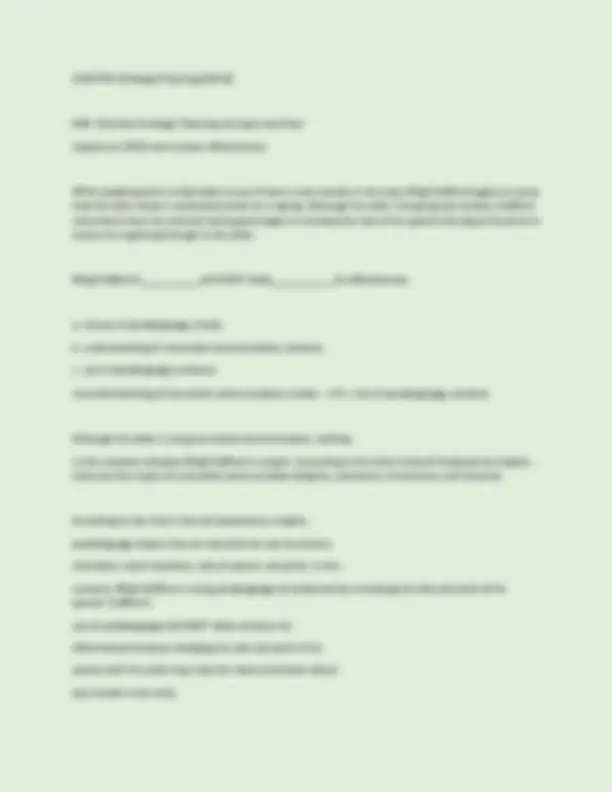
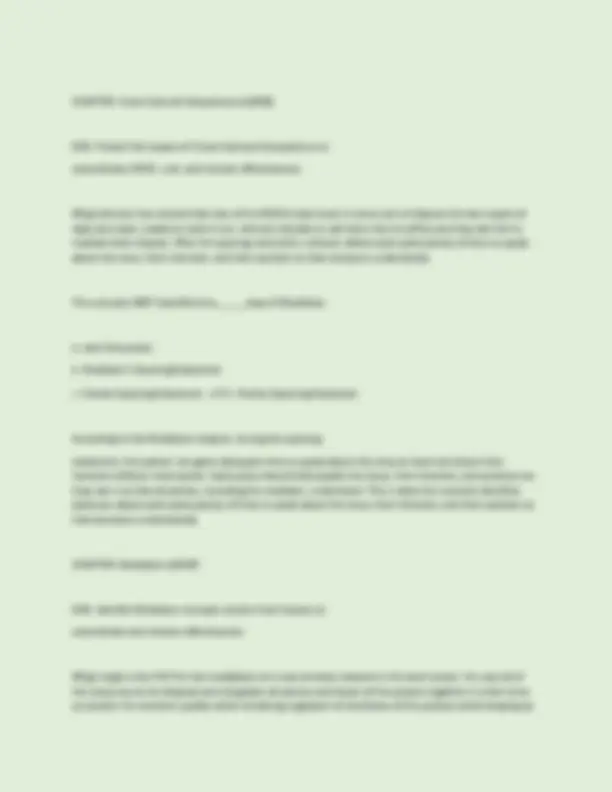
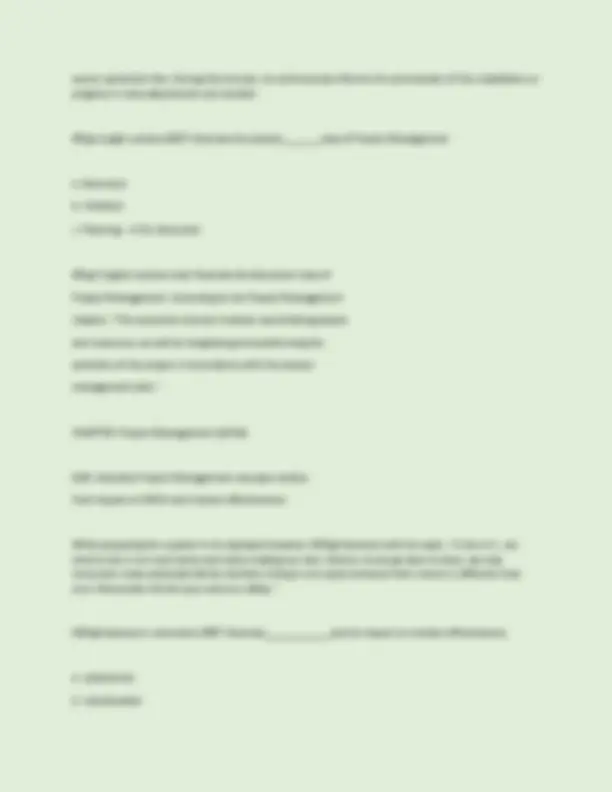
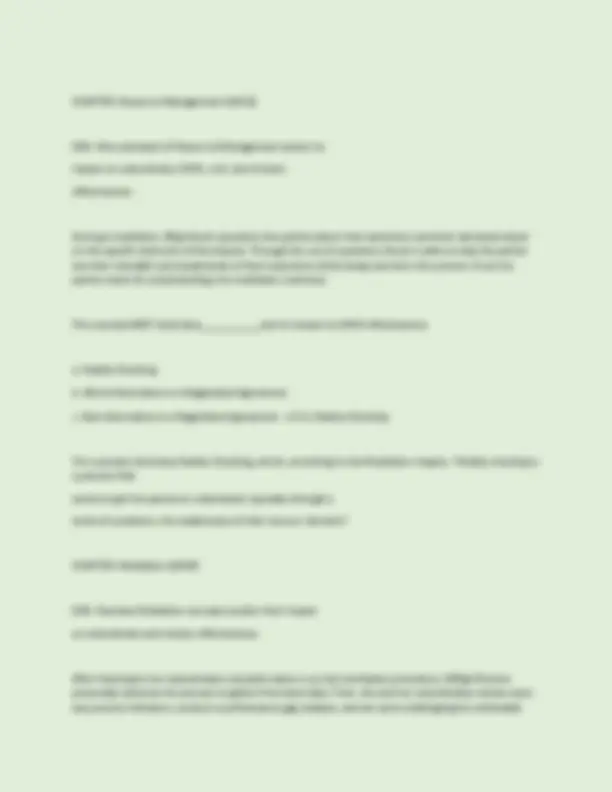
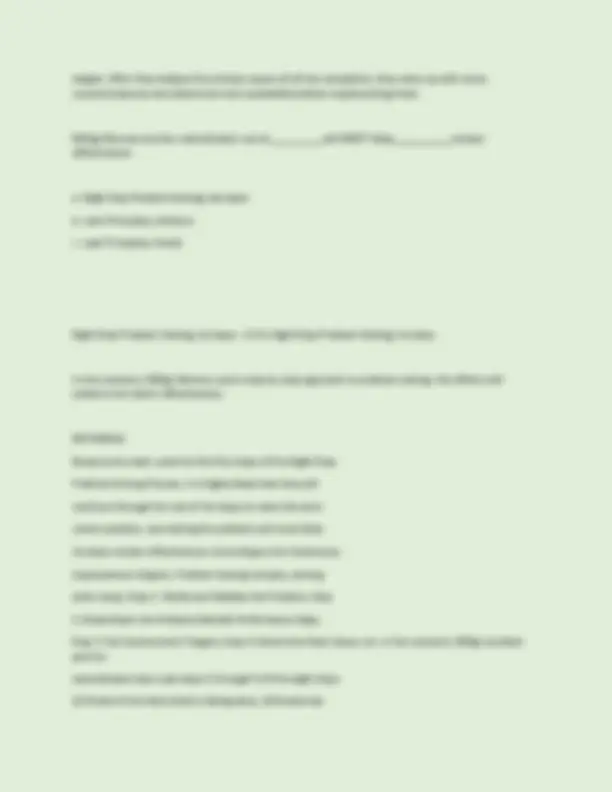

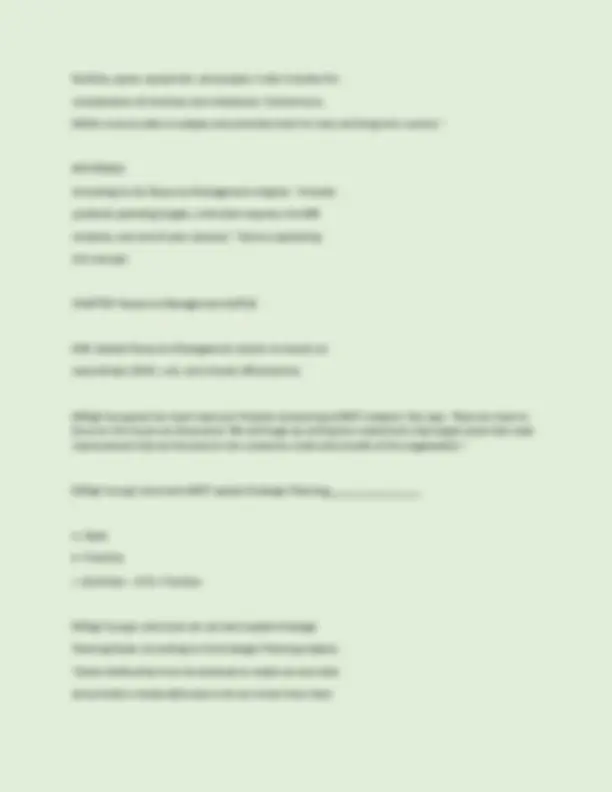
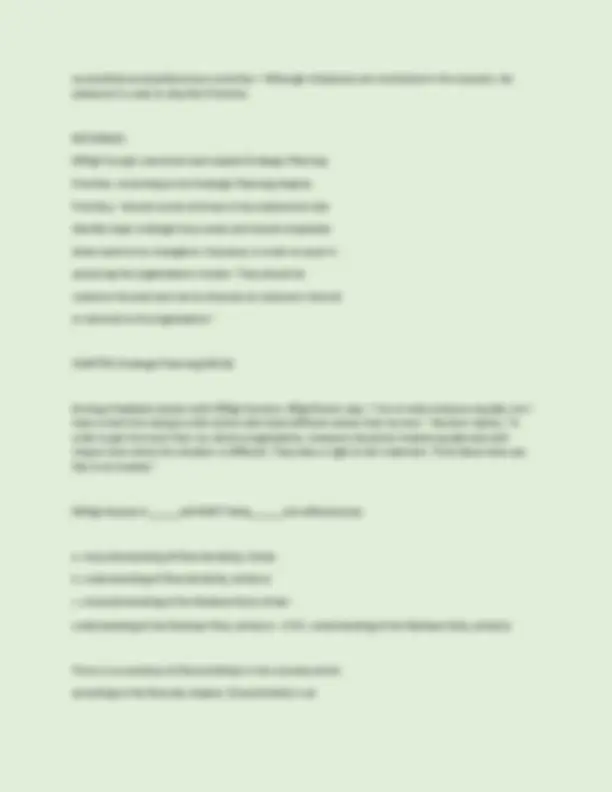
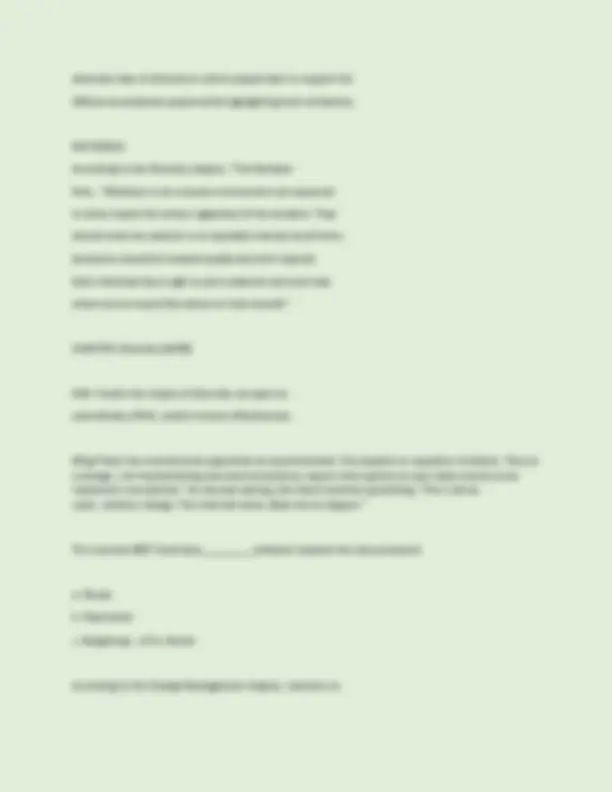
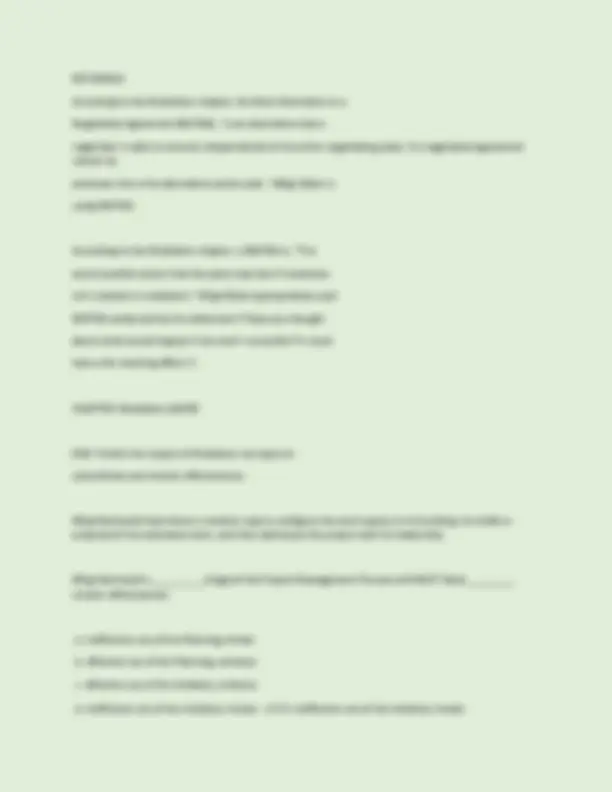
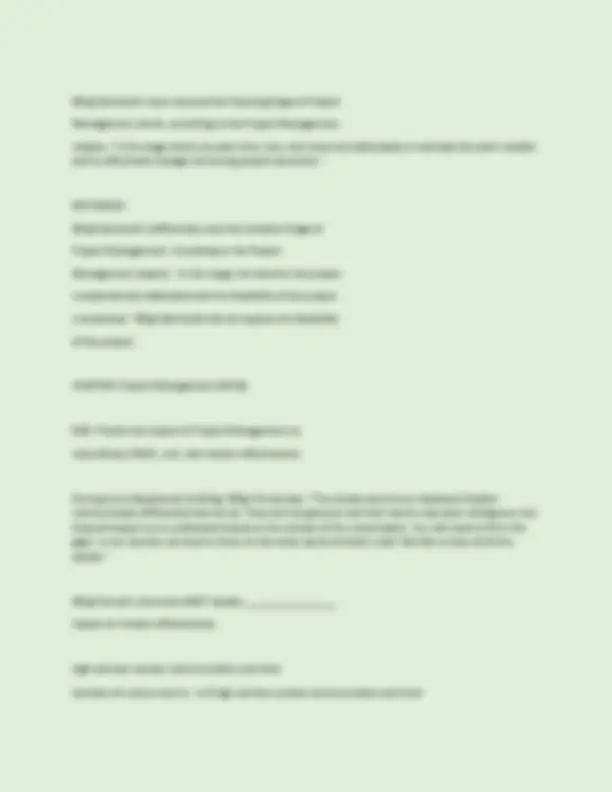
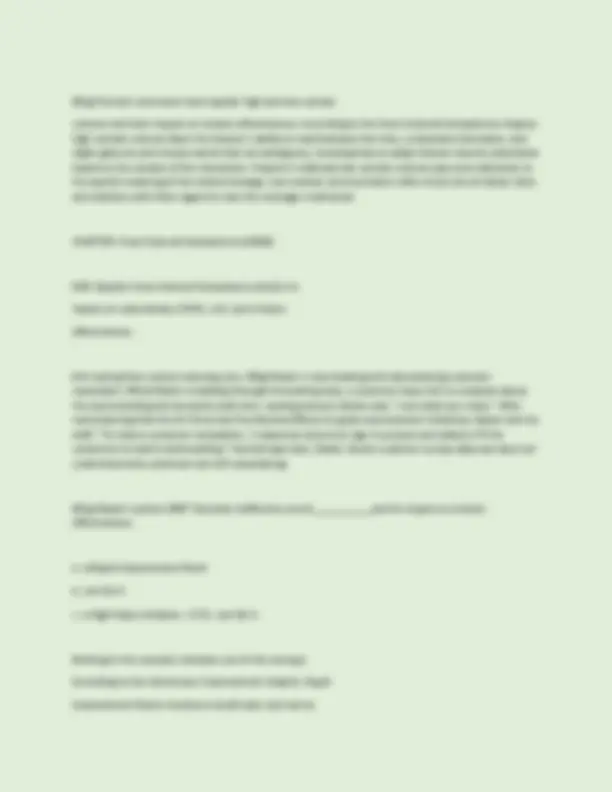
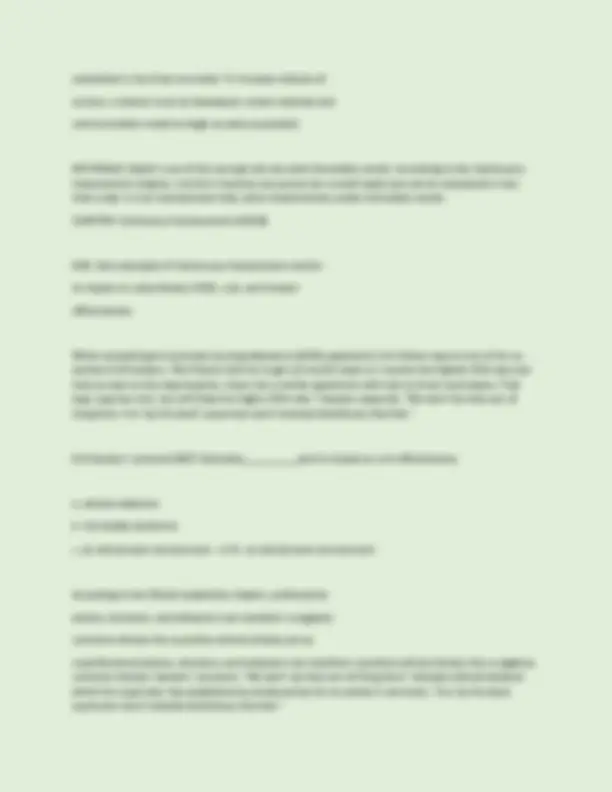
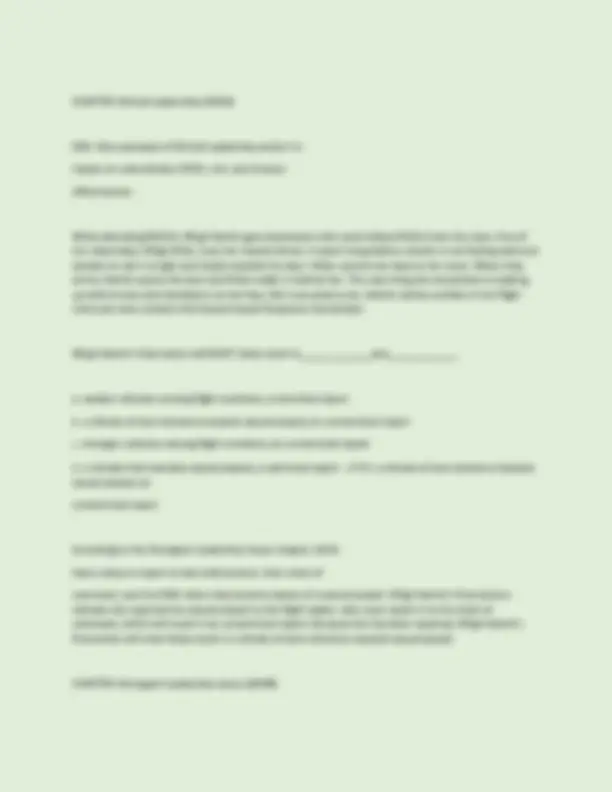
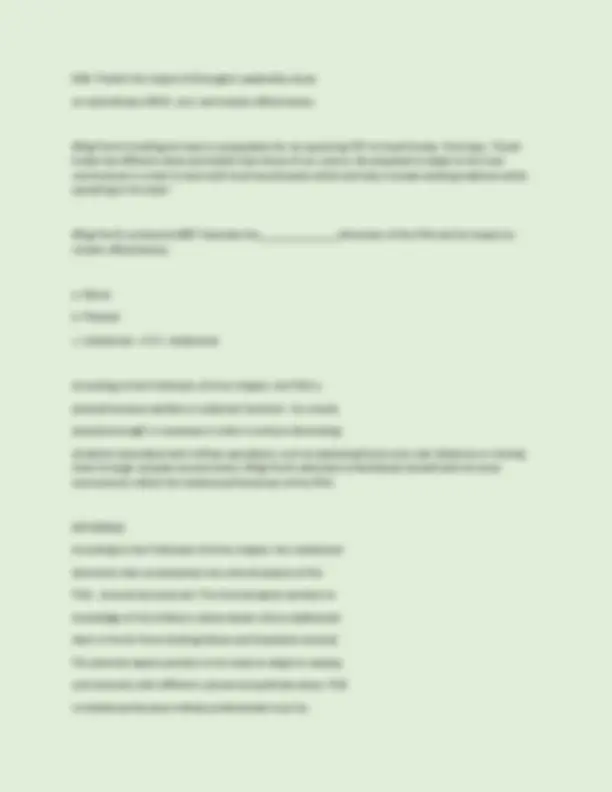
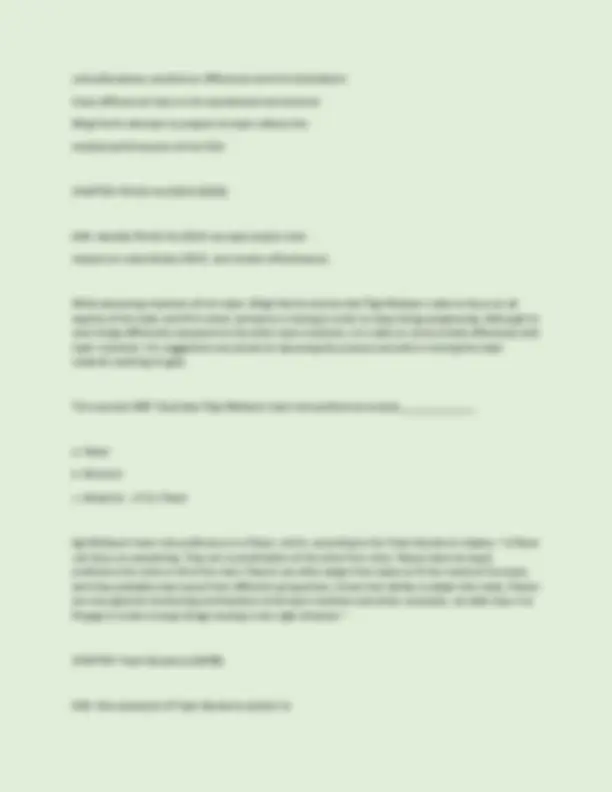
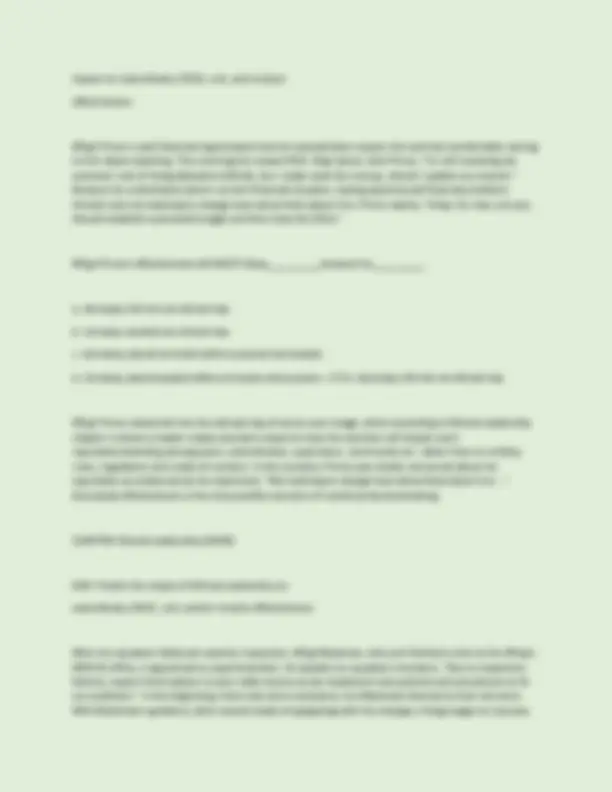
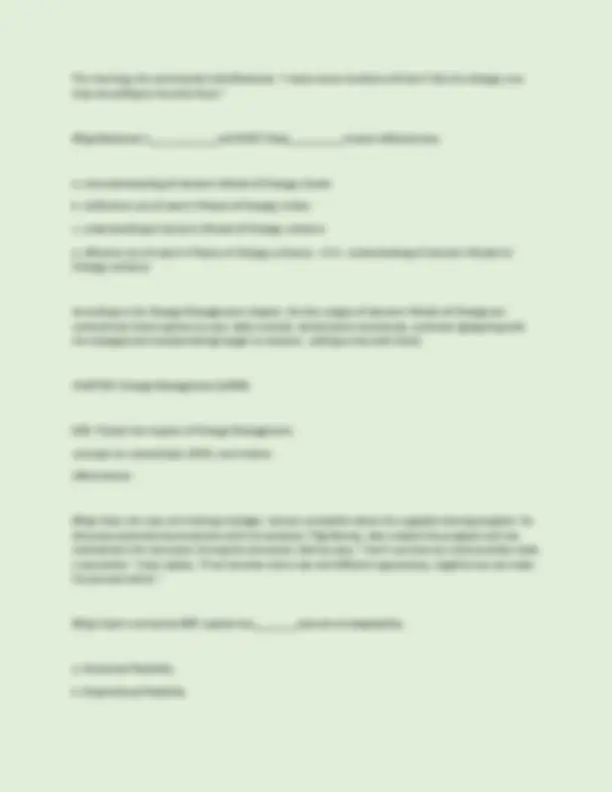
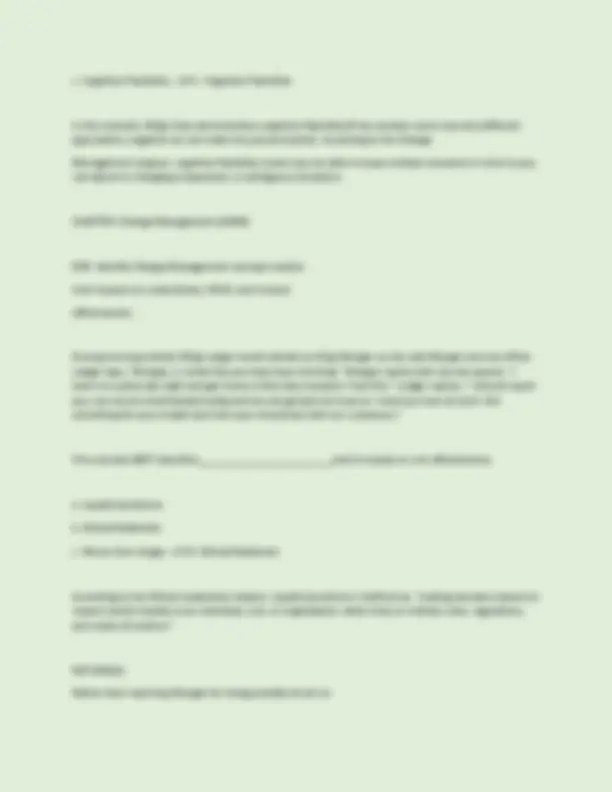
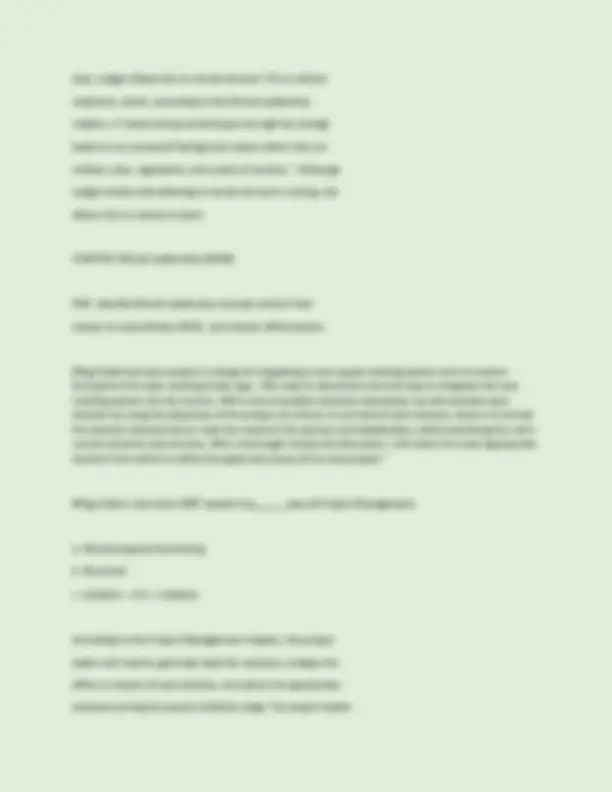
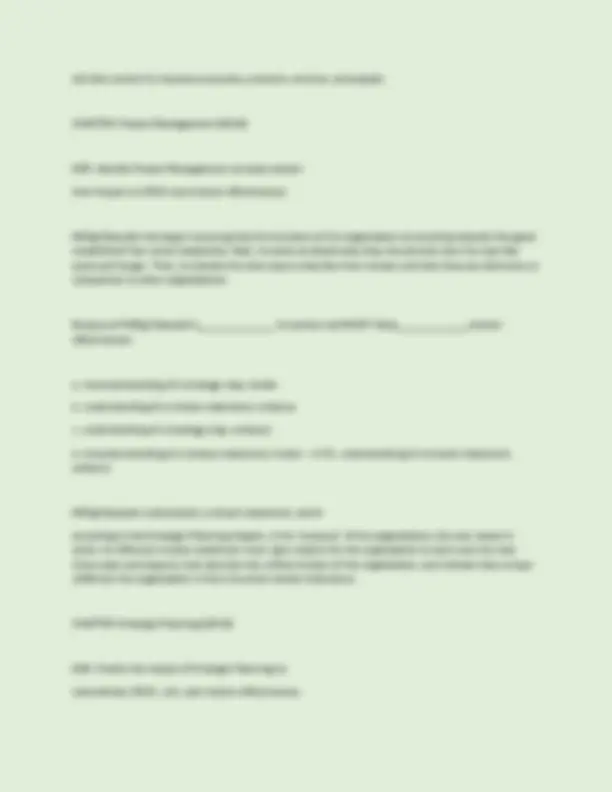
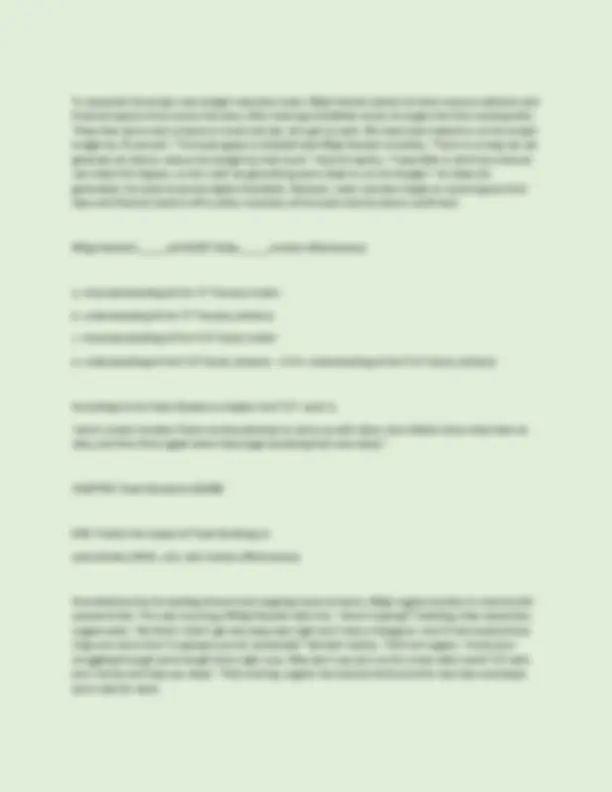

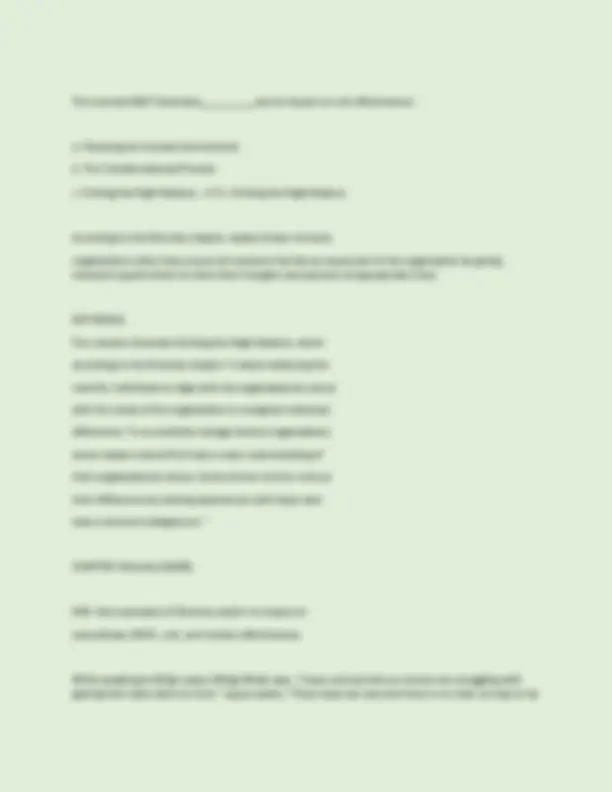
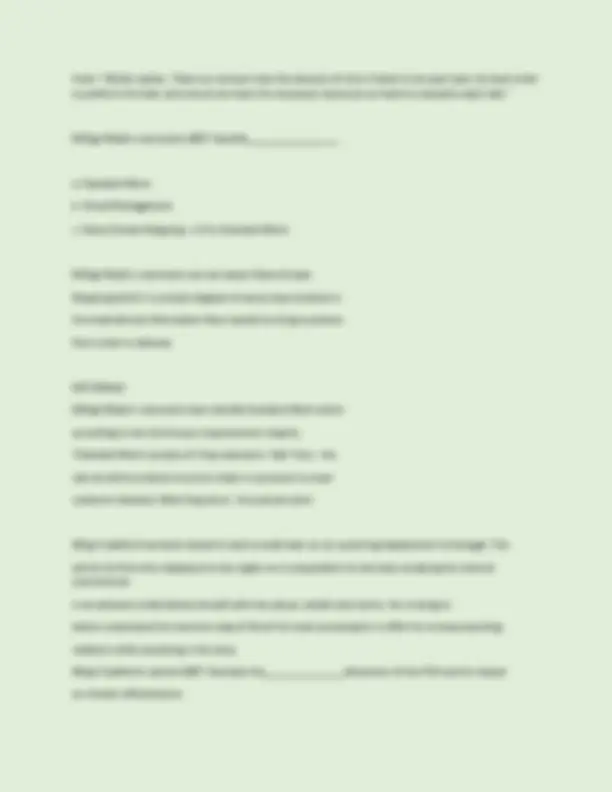
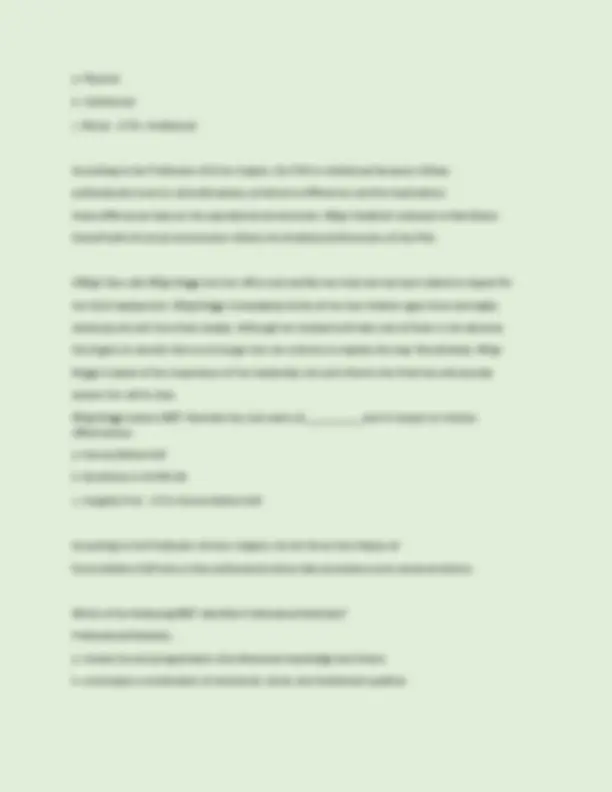
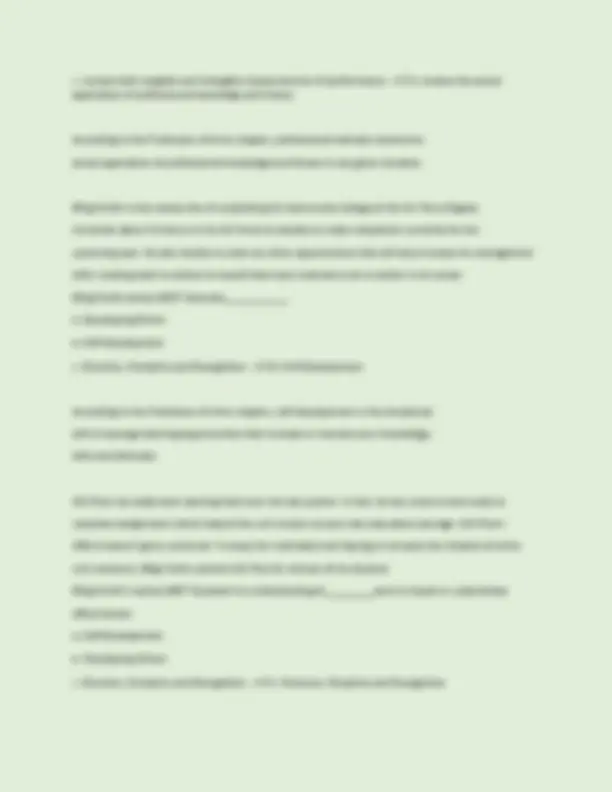
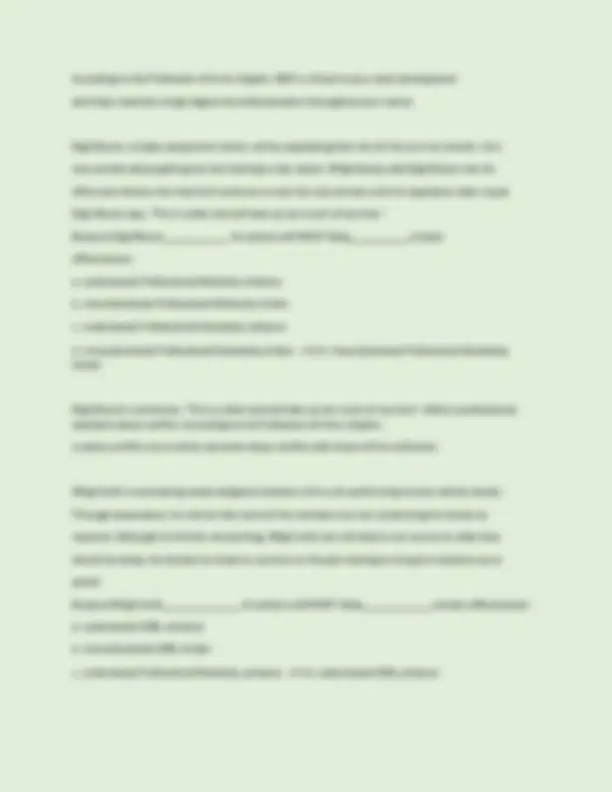
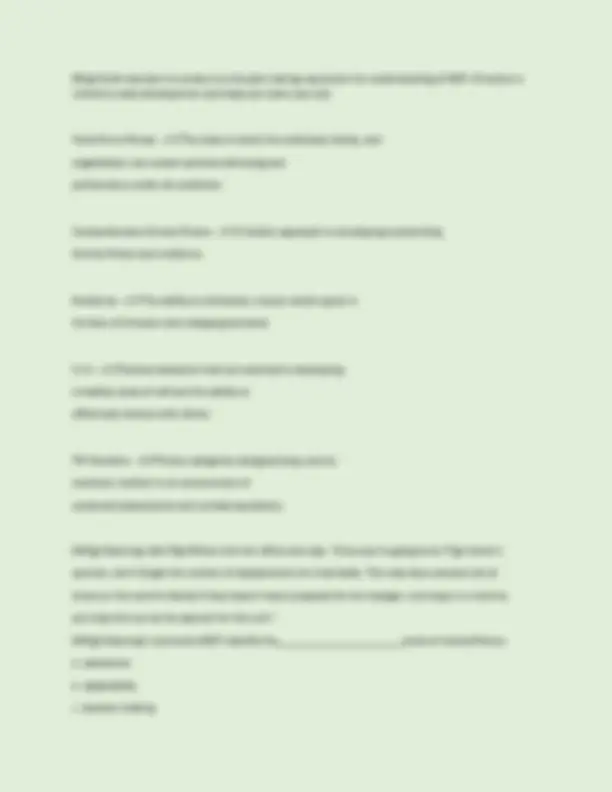
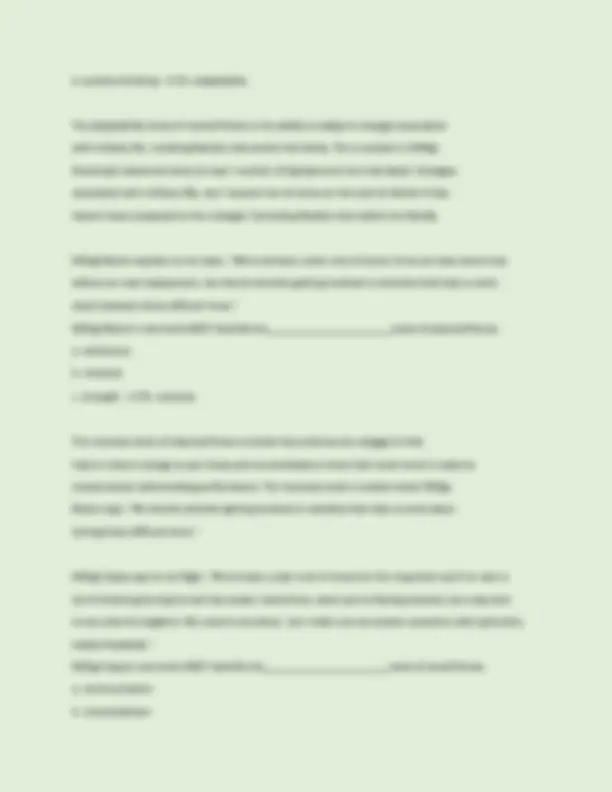
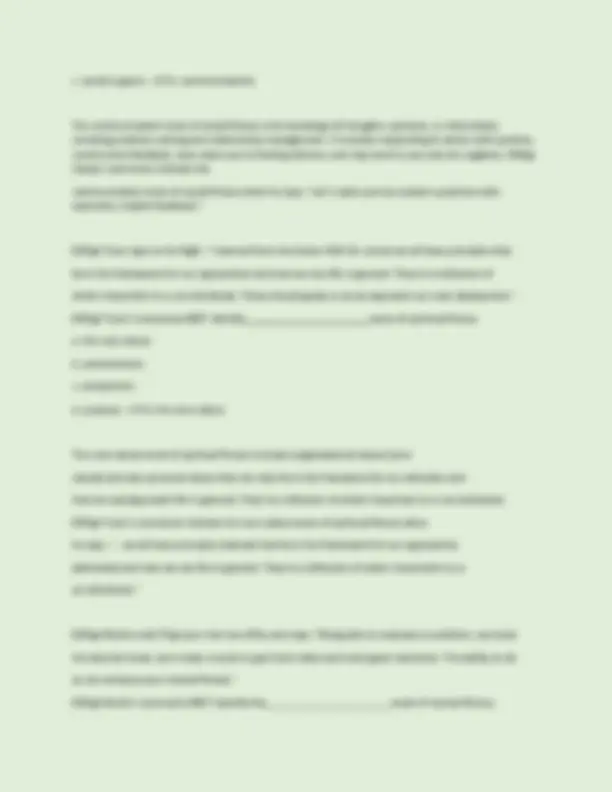
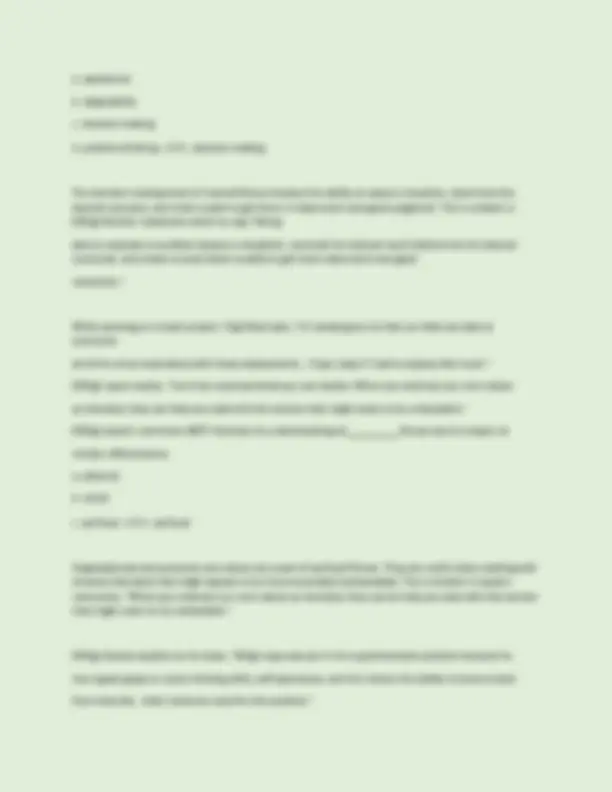
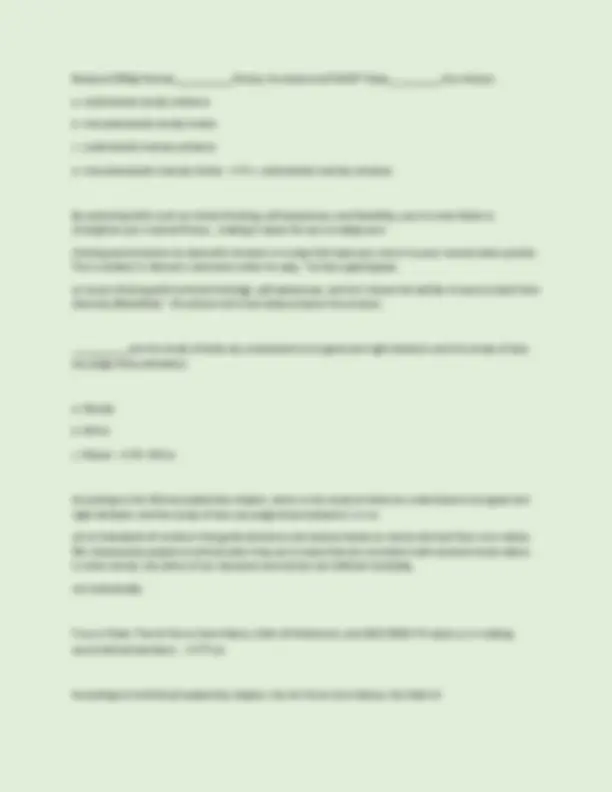
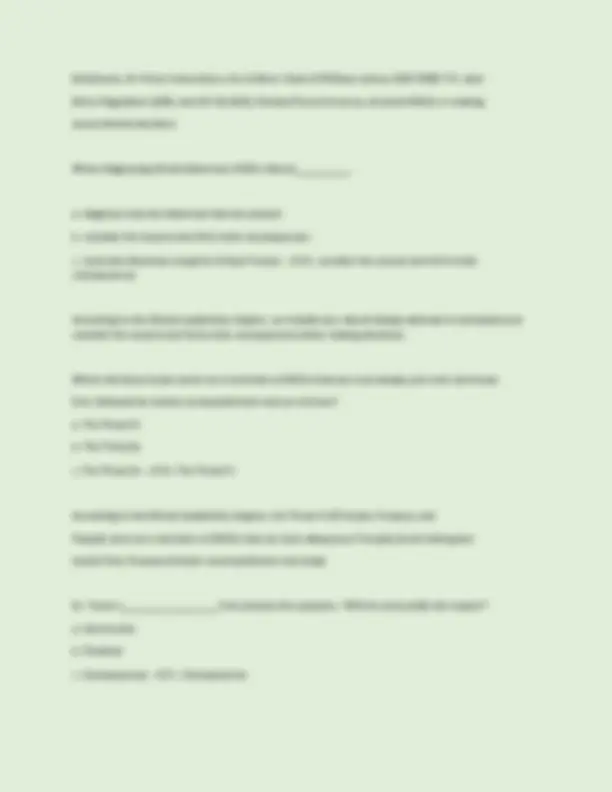
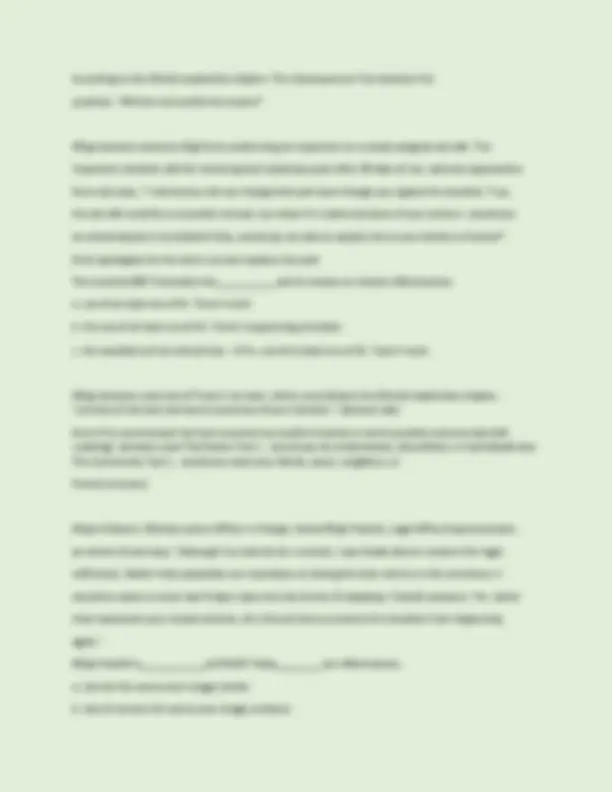
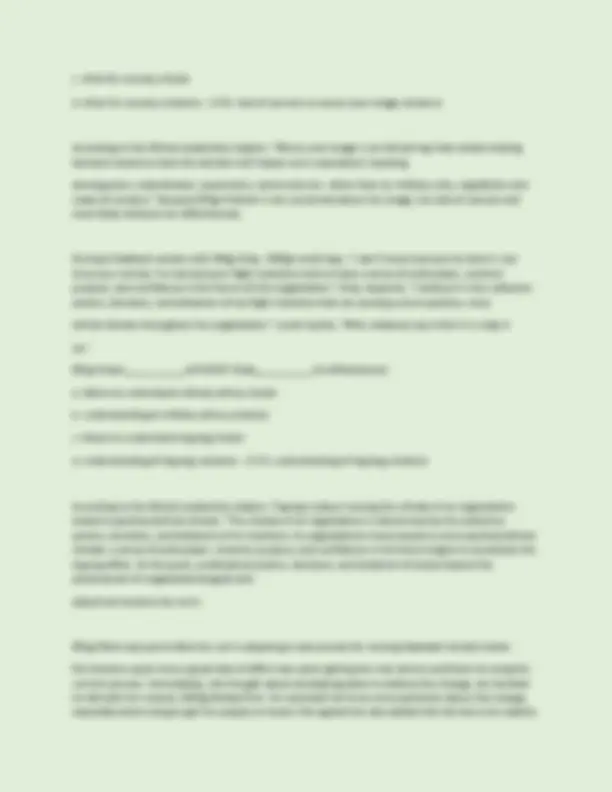
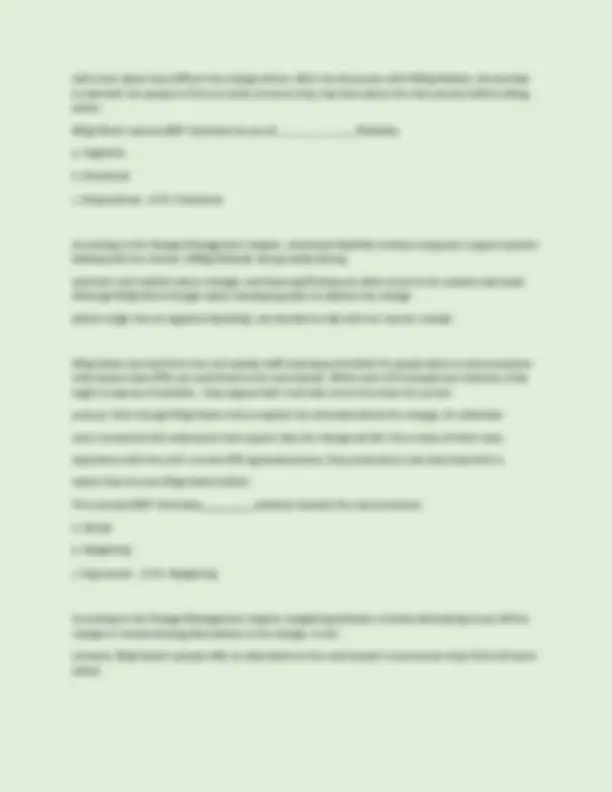
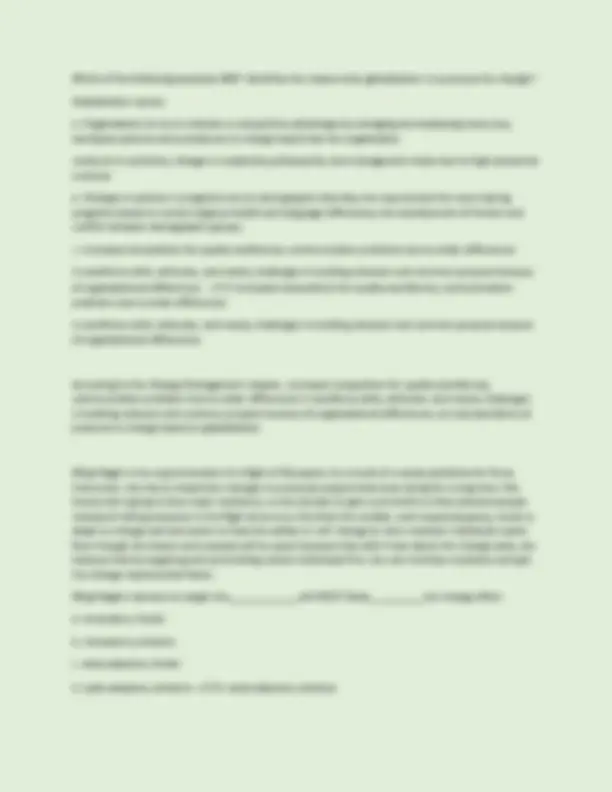
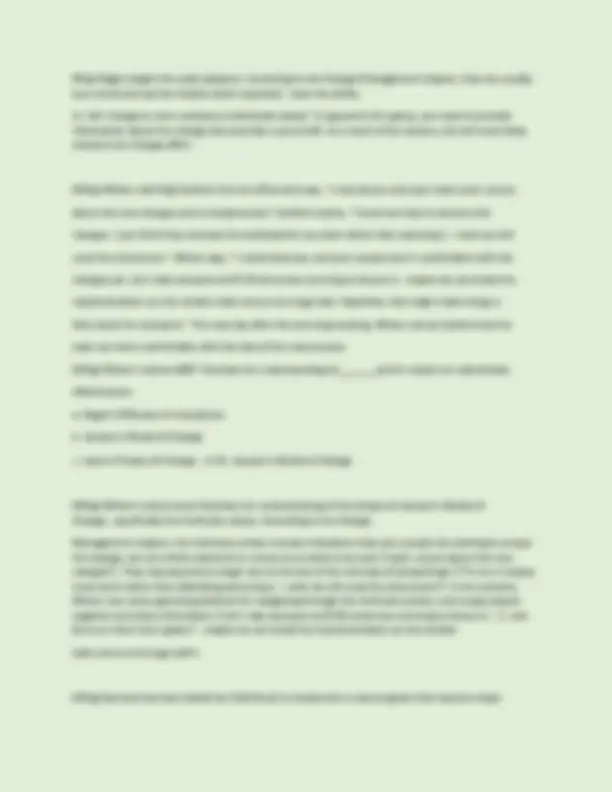
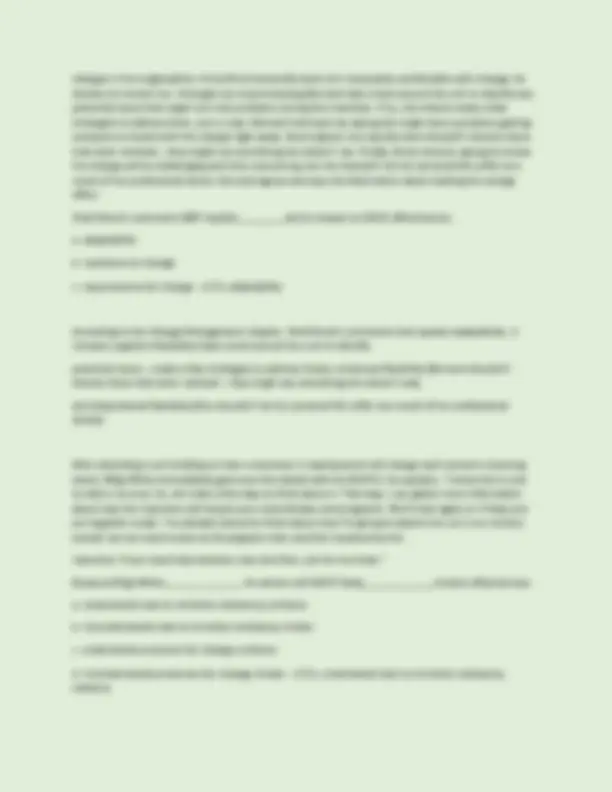
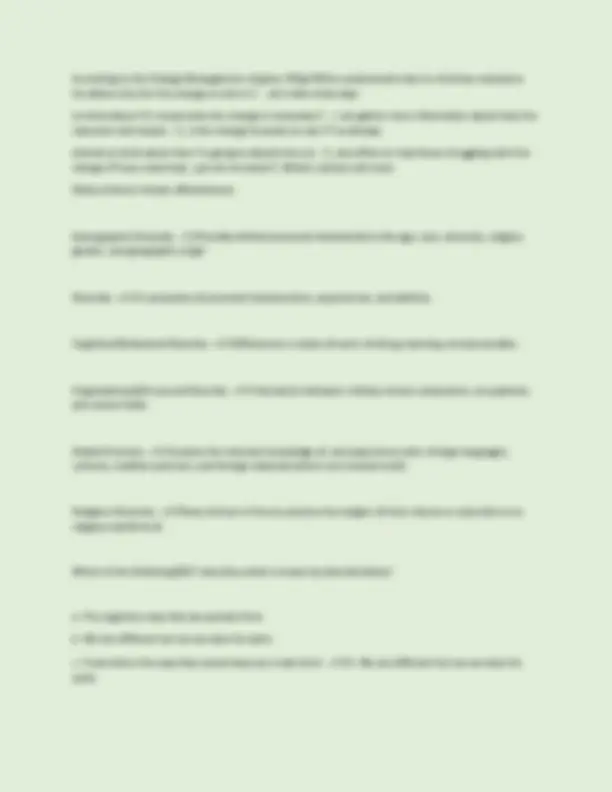
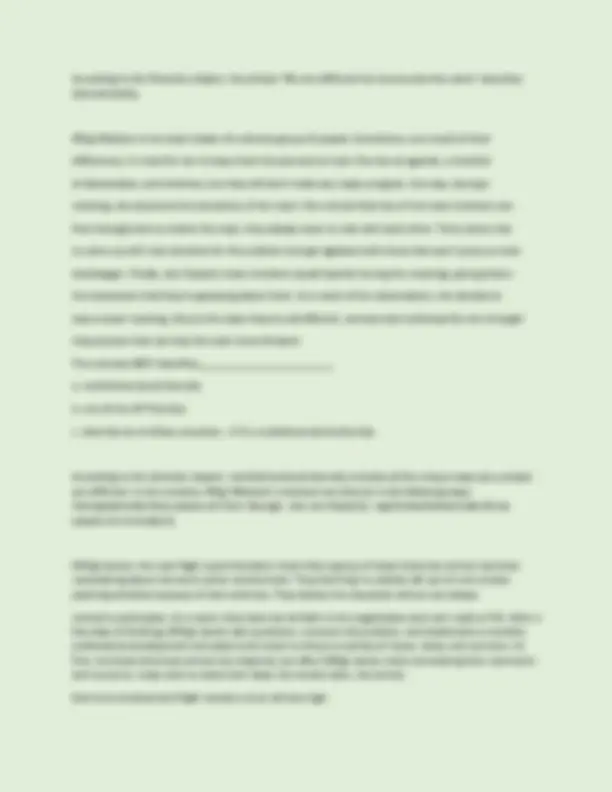
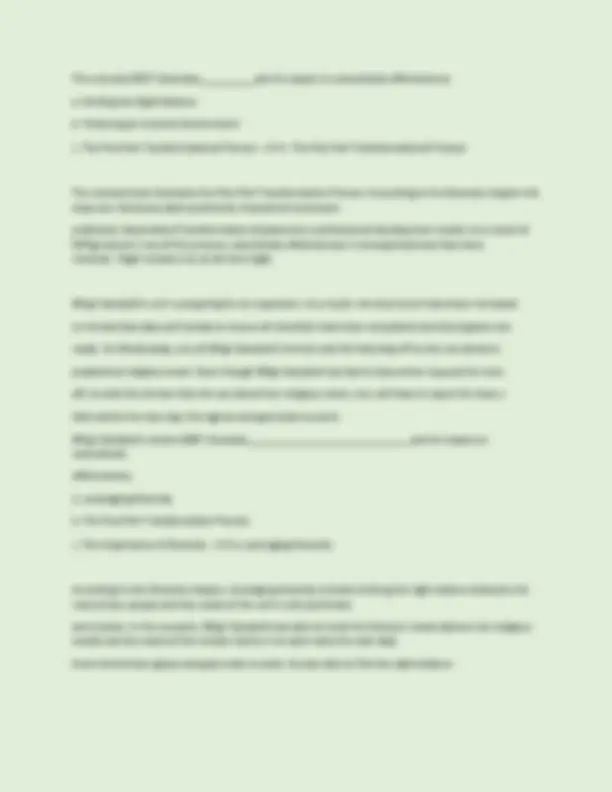
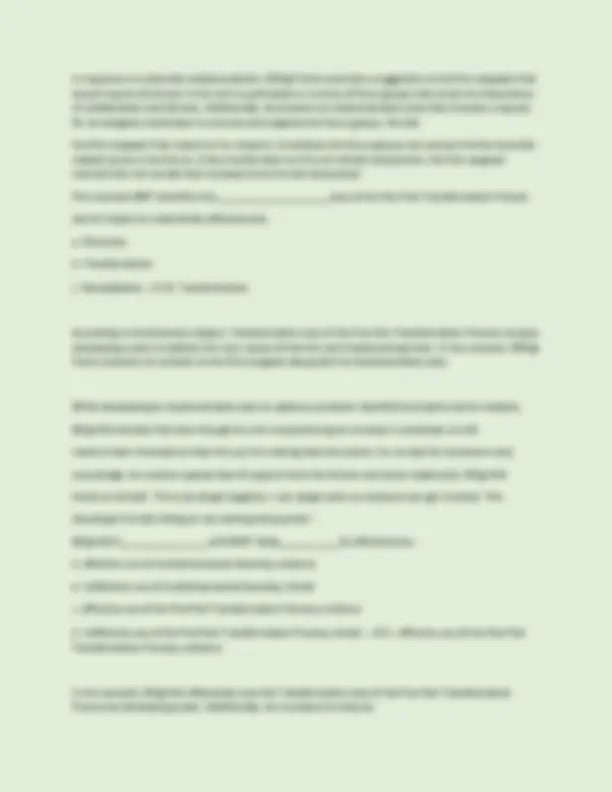
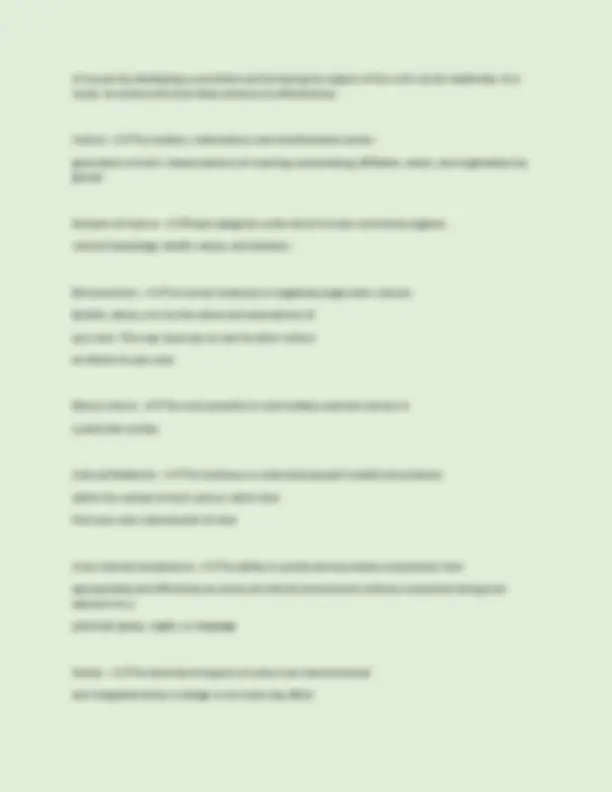
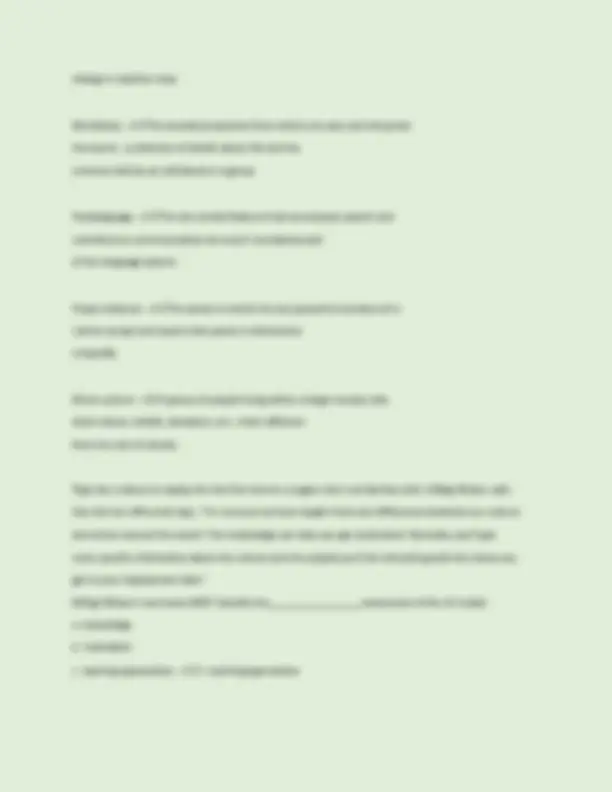
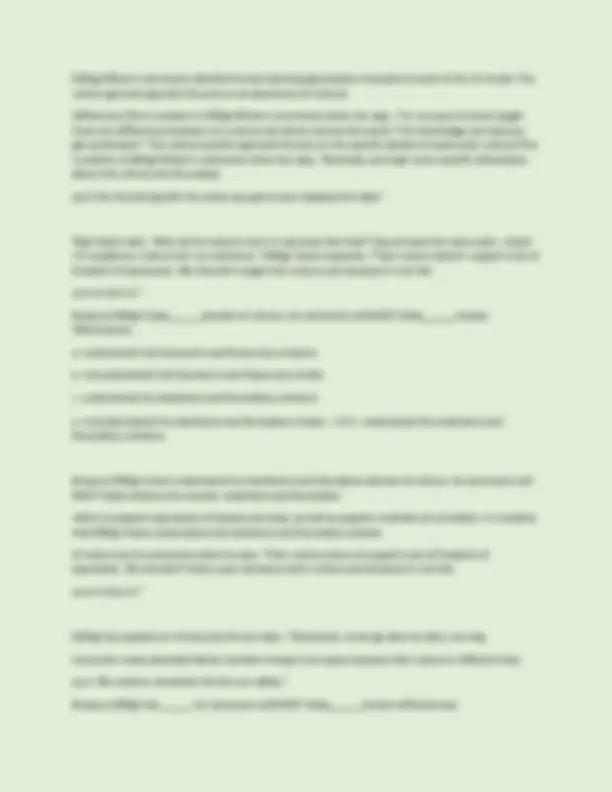
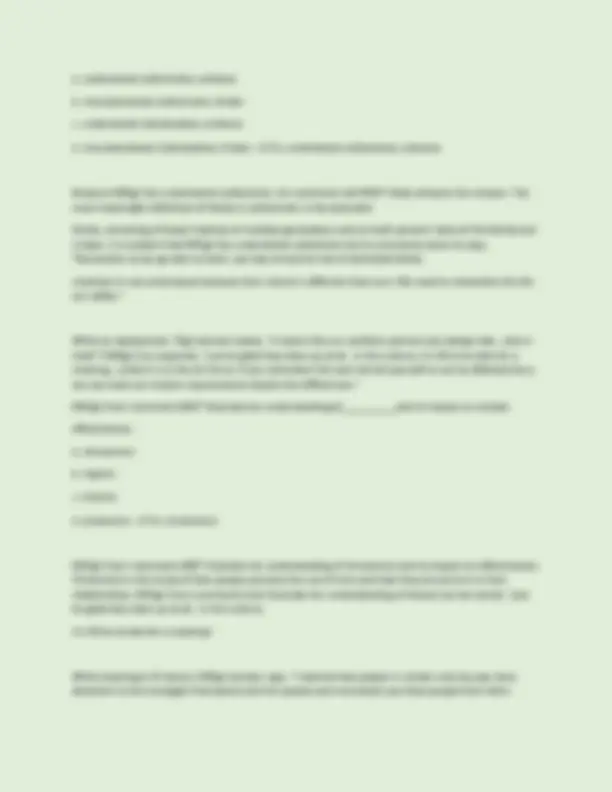
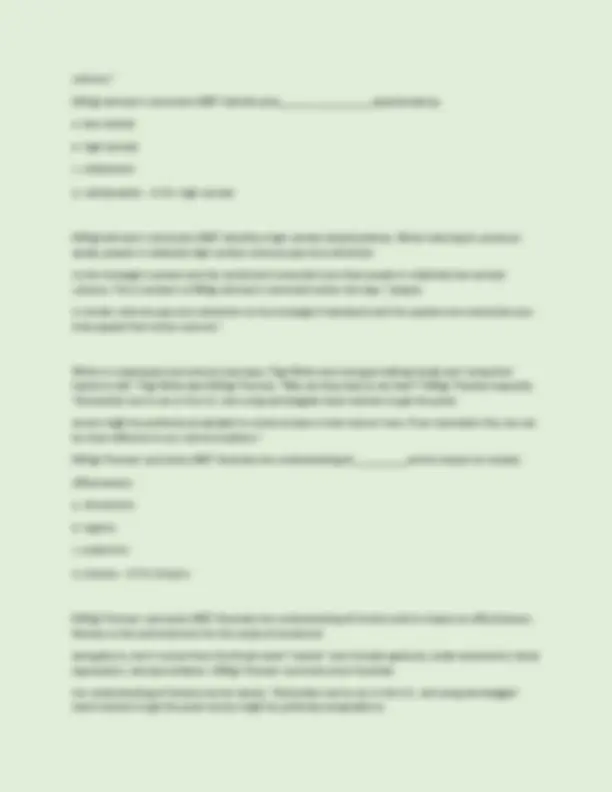
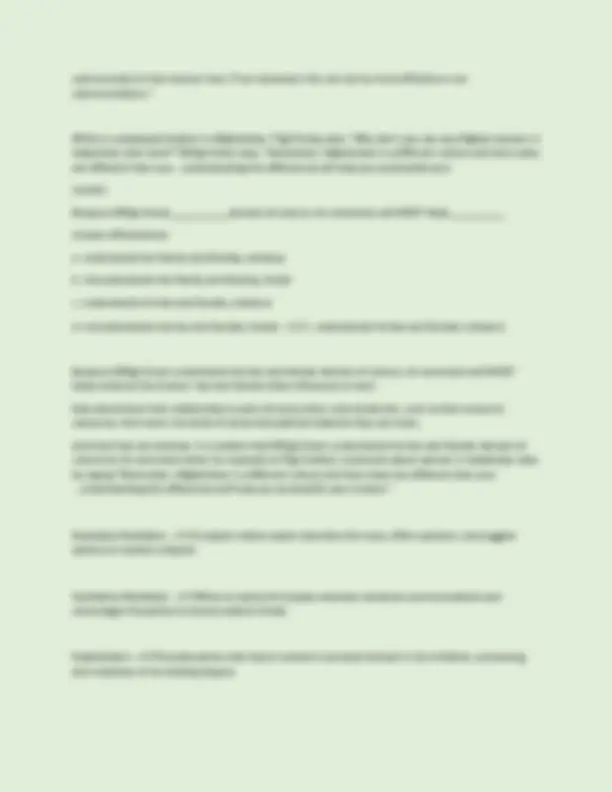
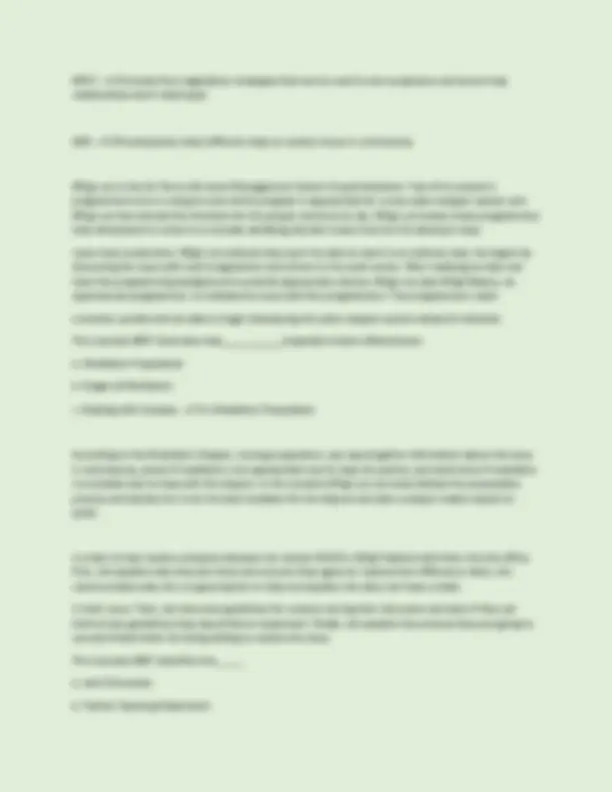
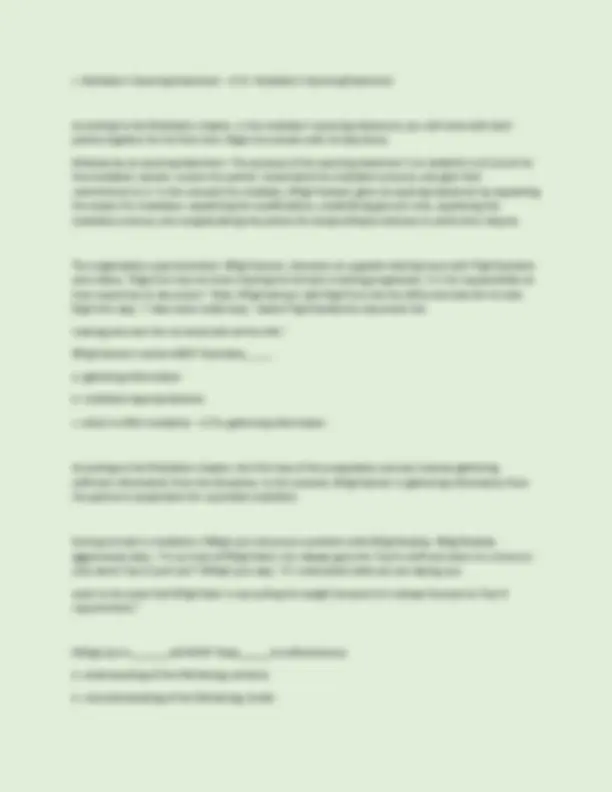
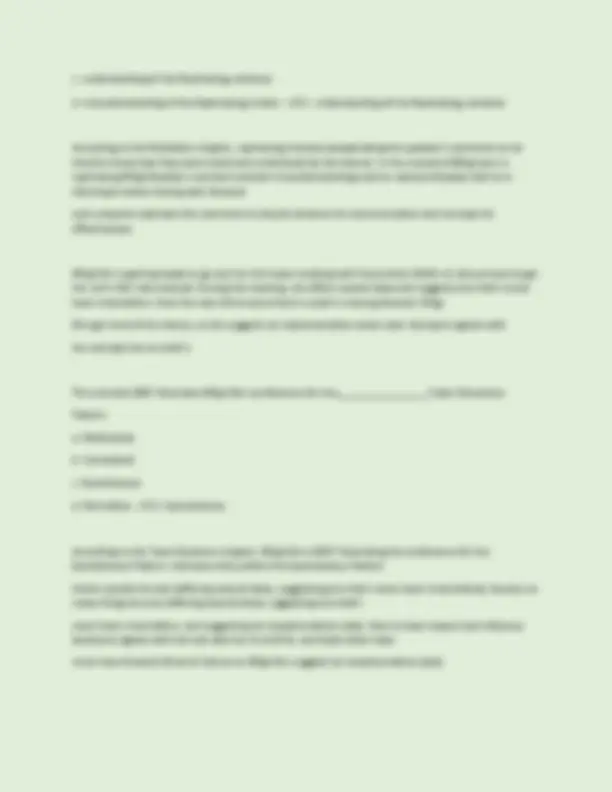
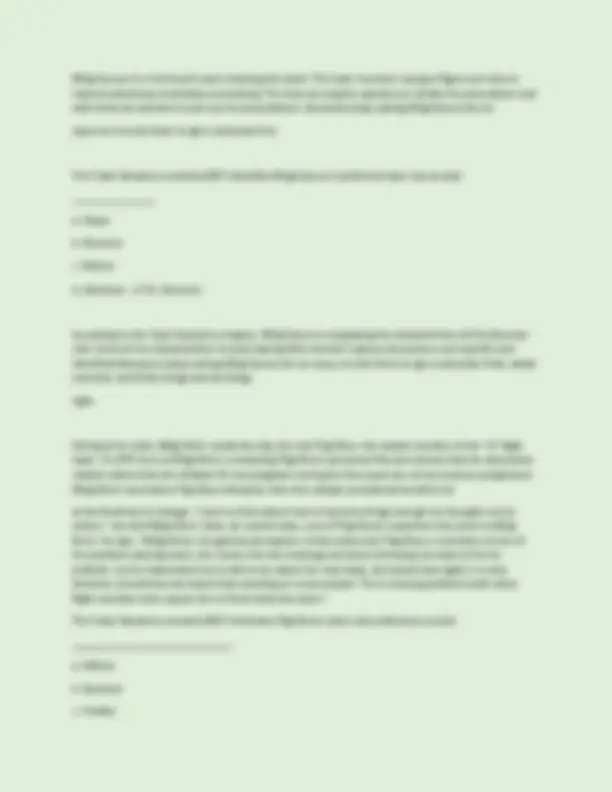
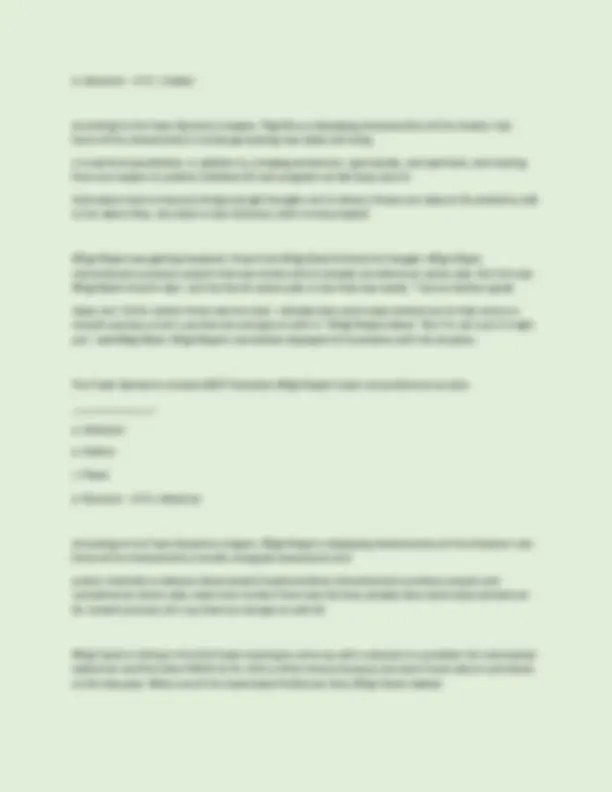
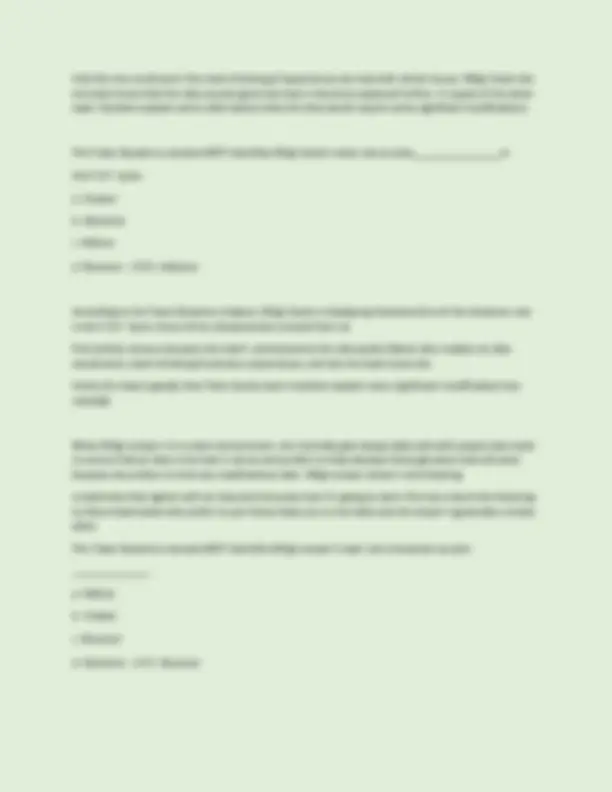
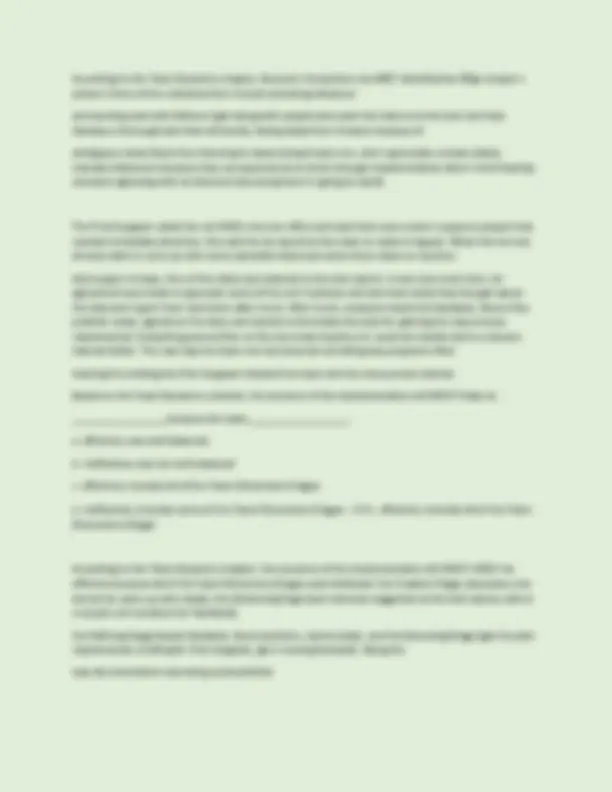
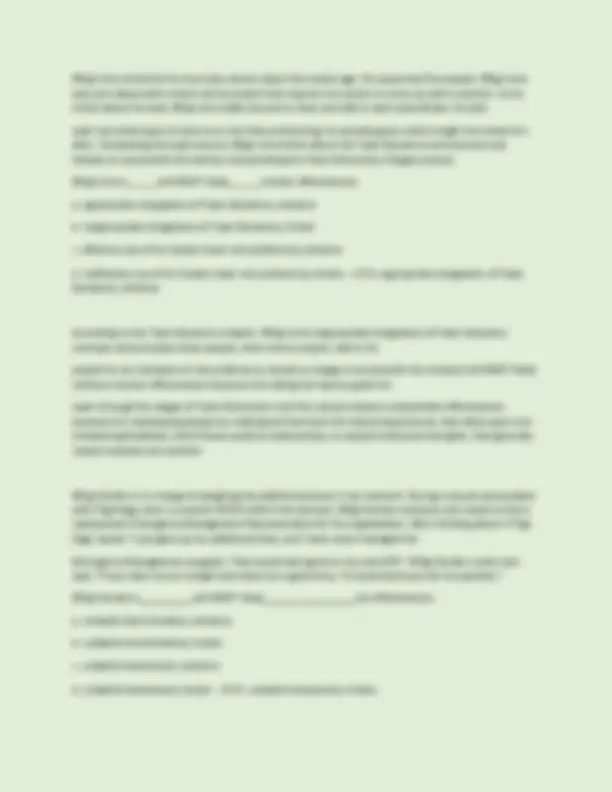
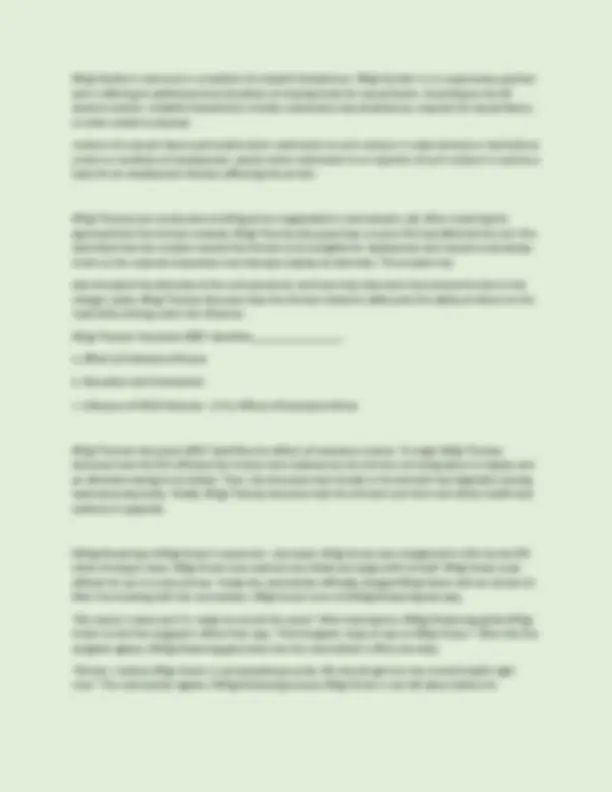
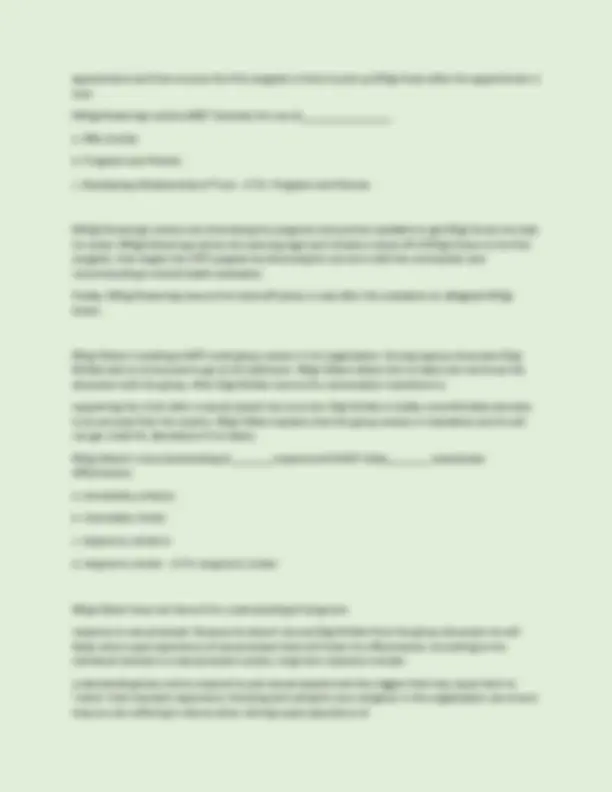
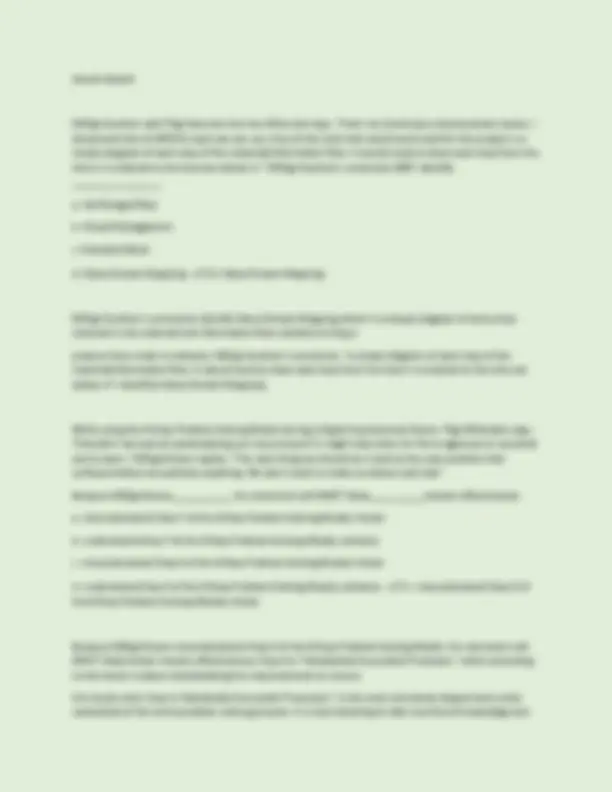
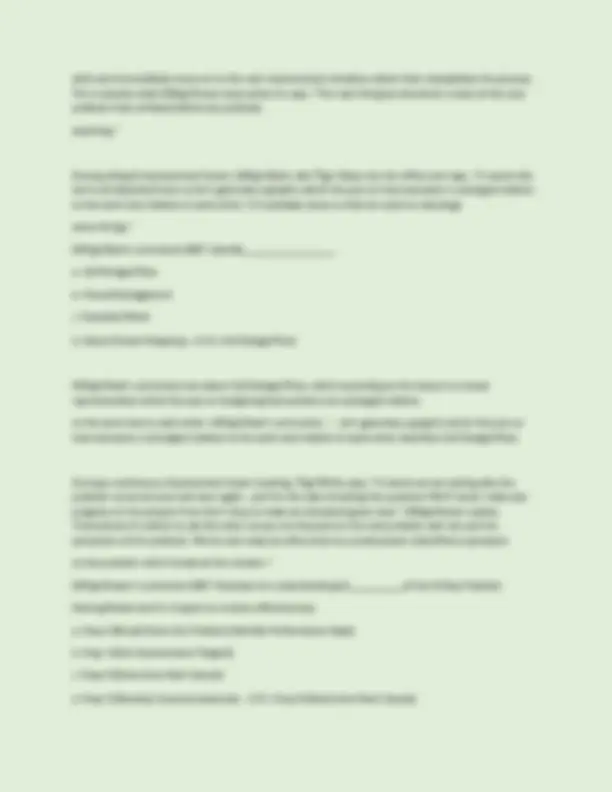
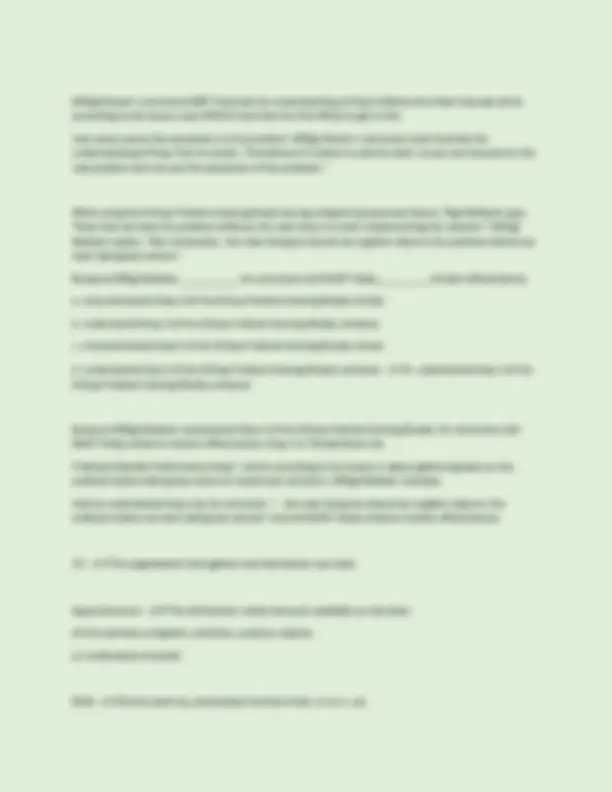
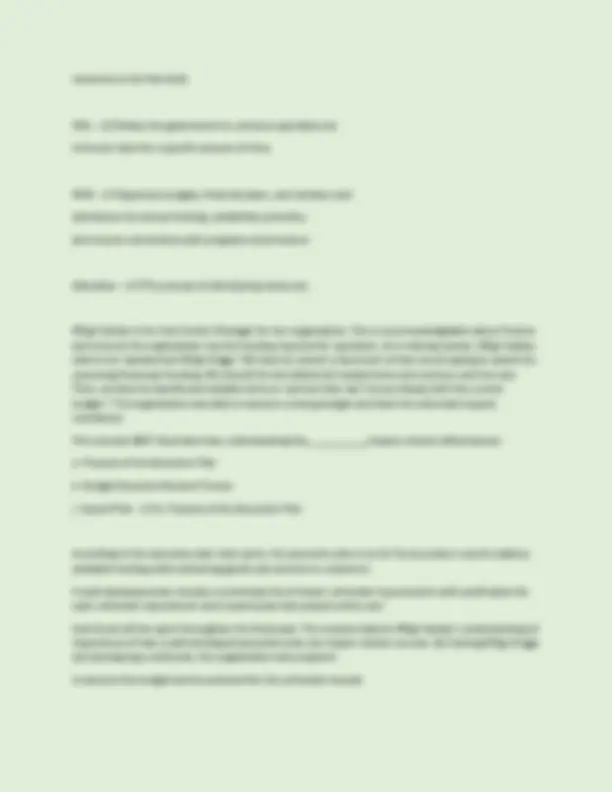
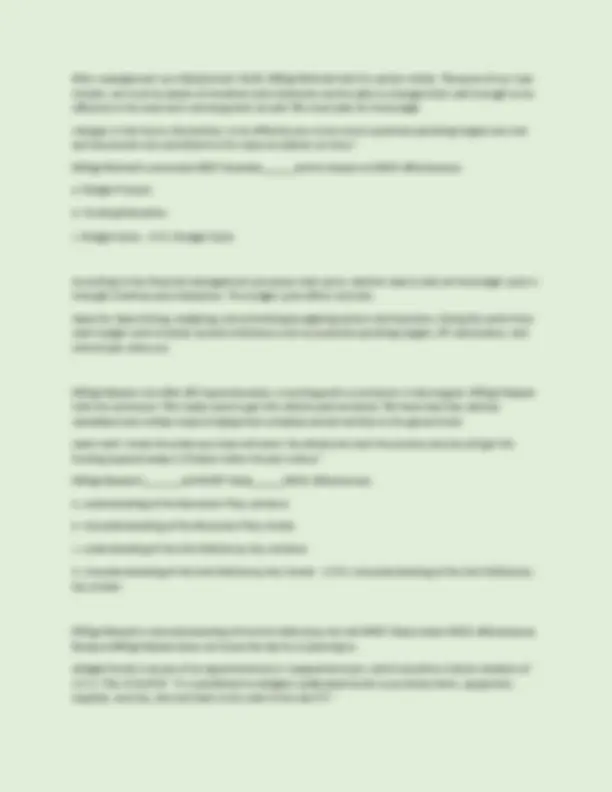
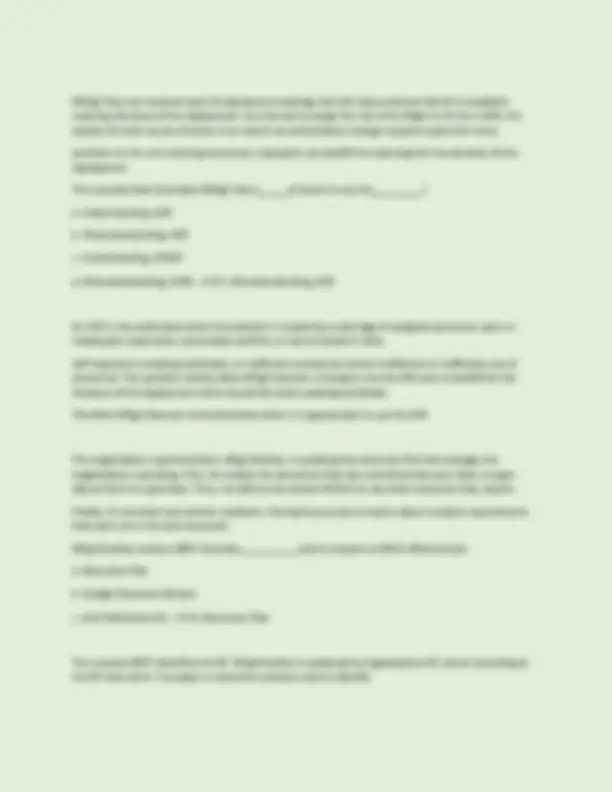
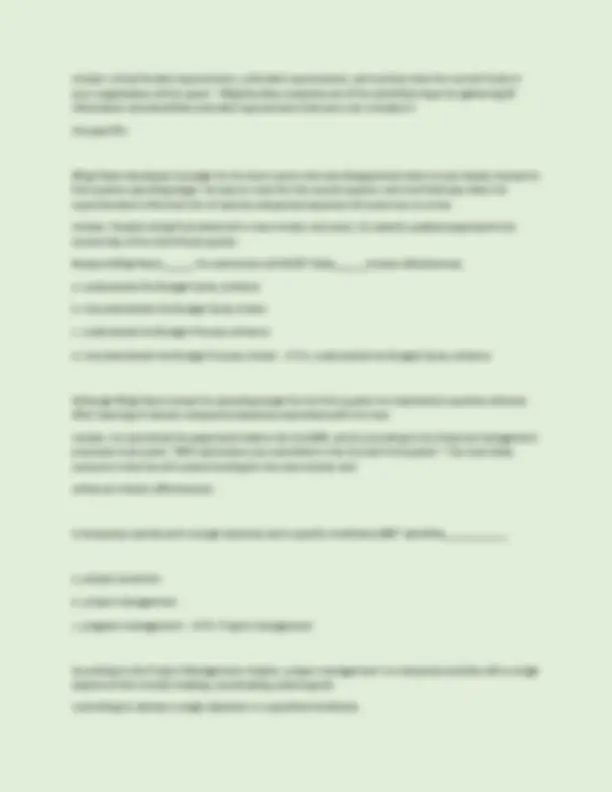
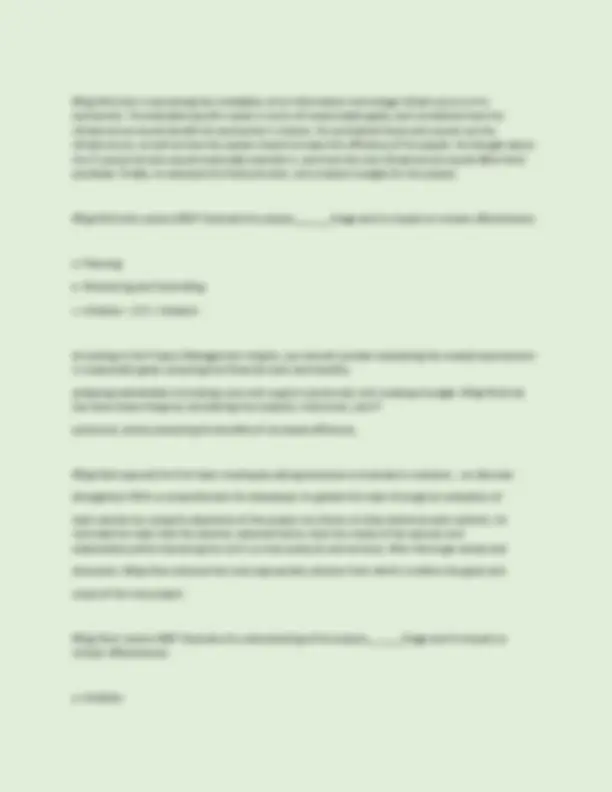

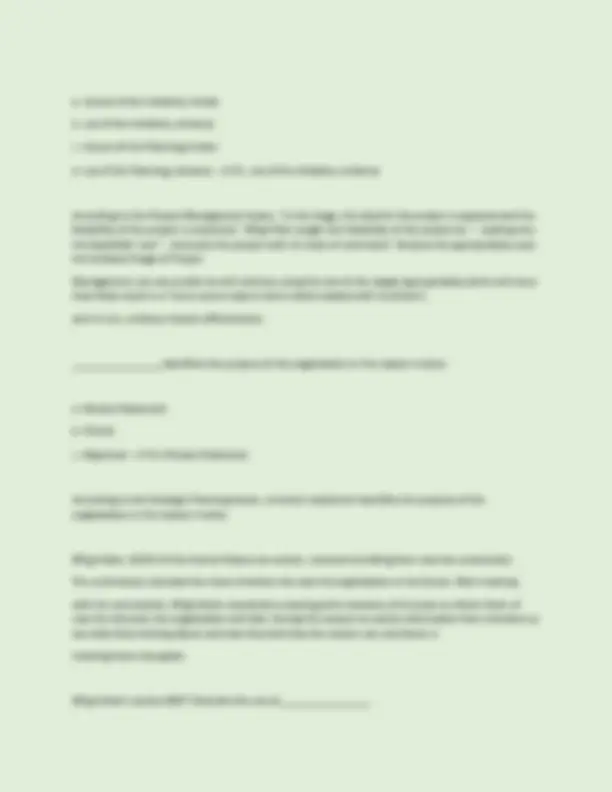
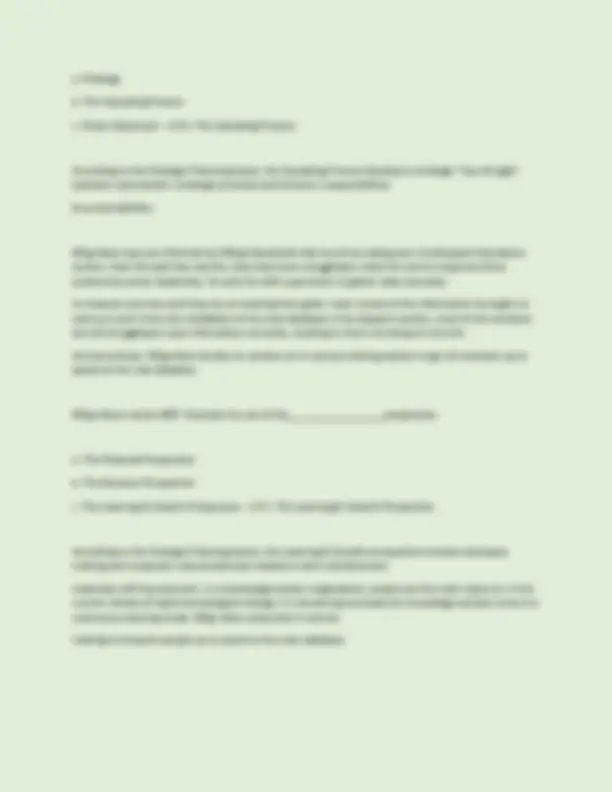
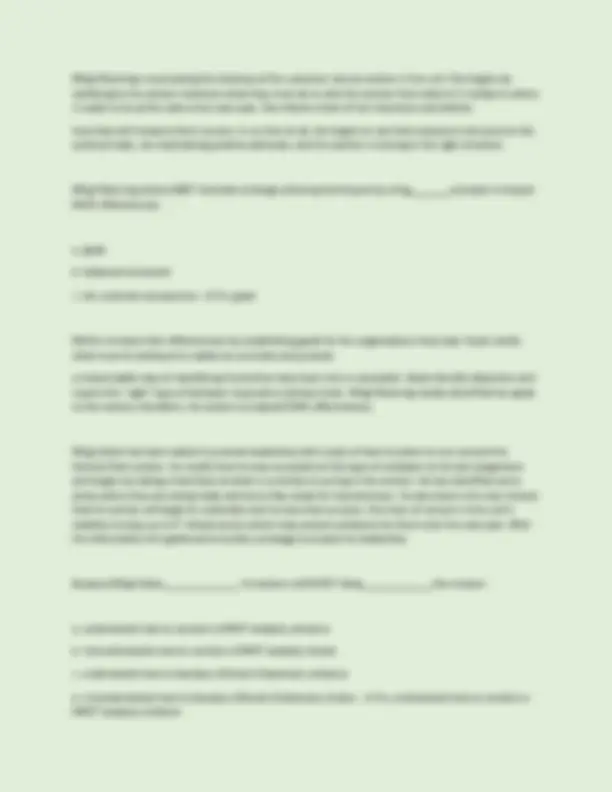
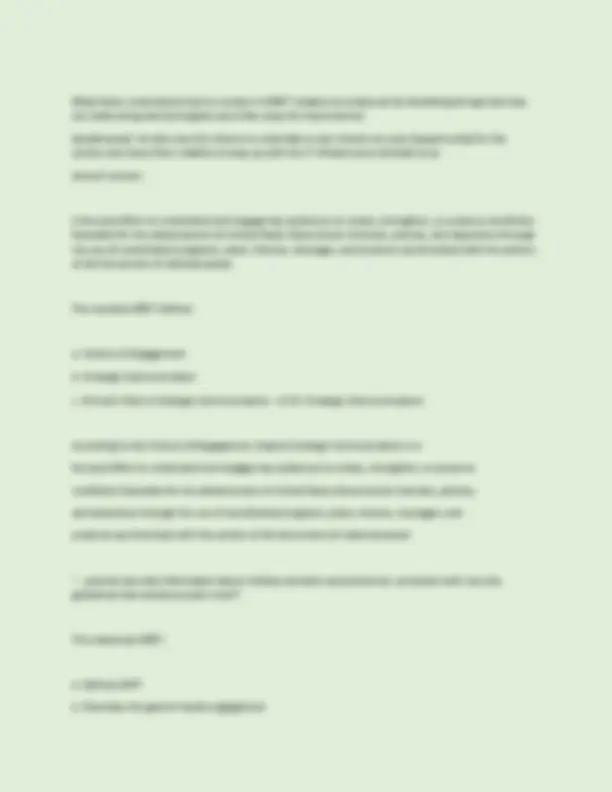

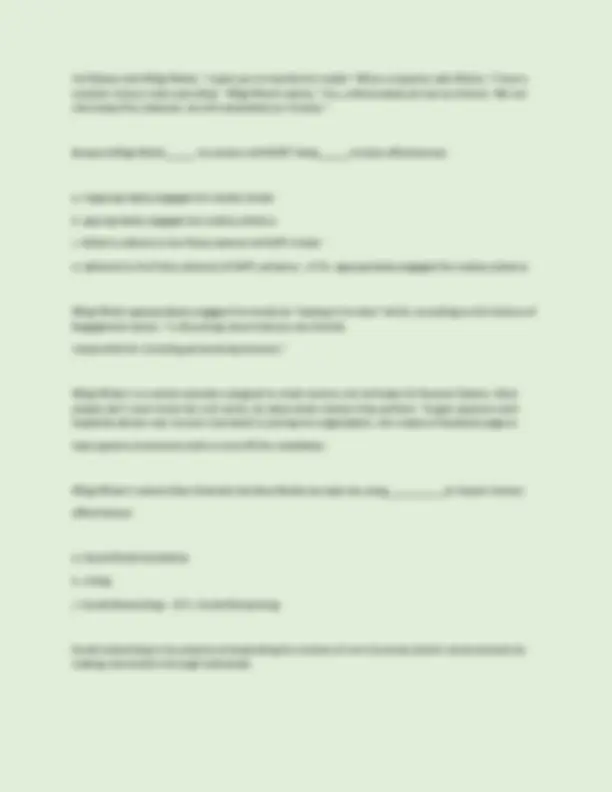


Study with the several resources on Docsity

Earn points by helping other students or get them with a premium plan


Prepare for your exams
Study with the several resources on Docsity

Earn points to download
Earn points by helping other students or get them with a premium plan
Community
Ask the community for help and clear up your study doubts
Discover the best universities in your country according to Docsity users
Free resources
Download our free guides on studying techniques, anxiety management strategies, and thesis advice from Docsity tutors
A comprehensive overview of key concepts related to professionalism, ethics, and strategic planning within the air force, focusing on the sncoa (senior non-commissioned officer academy) exam preparation. It presents various scenarios and questions designed to test understanding of professional methods, ethical leadership, strategic planning, cross-cultural competence, mediation, and project management. Valuable for individuals preparing for the sncoa exam, offering insights into the expected knowledge and skills.
Typology: Exams
1 / 83

This page cannot be seen from the preview
Don't miss anything!












































































While conducting roll call with his airmen, SMSgt Hunt says, "When possible, take advantage of training opportunities when they present themselves. When enrolled in a distance learning course, put your best effort into completing it and learning from it. Seek out opportunities that will help you grow as an airman". Because SMSgt Hunt , his actions will MOST likely mission effectiveness. a. understands Professional Standards; enhance b. misunderstands Professional Methods; hinder c. misunderstands Professional Standards; hinder d. understands Professional Methods; enhance - ✔✔b. understands Professional Methods; enhance Rationale: SMSgt Hunt's comments demonstrates he understands the Professional Methods quality of Progressive Professionalism. The POA chapter states, "As a senior leader, your continued monitoring and commitment to ensuring professional methods are maintained and enhanced should add value to the meaning of professionalism for you and those you lead. If done effectively, these actions can help you (and others) continue to move further along to the right side of the continuum." CHAPTER: POA & the SNCO (LM01) SOB: Predict the impact of the Profession of Arms on subordinate, SNCO, unit, and mission effectiveness. MSgt Prince is well liked and appreciates how his subordinates respect him and feel comfortable coming to him about anything. This morning his newest NCO, SSgt James, tells Prince, "I'm still receiving my overseas' cost of living allowance (COLA), but I really need the money, should I update my records." Because he understands James' current financial situation, having experienced financial problems
himself, and not wanting to change how James feels about him, Prince replies, "Okay, for now, but you should establish a personal budget and then stop the COLA." MSgt Prince's effectiveness will MOST likely because he. - ✔✔decrease; fell into an ethical trap Rationale: MSgt Prince clearly fell into the ethical trap of worry over image, which according to Ethical Leadership chapter is where a leader makes decisions based on how the decision will impact one's reputation/standing among peers, subordinates, supervisors, community etc. rather than on military rules, regulations and codes of conduct. In the scenario, Prince was clearly concerned about his reputation as evidenced by the statement, "Not wanting to change how James feels about him ..." Decreased effectiveness is the only possible outcome of unethical decision-making. MSgt Moxley was just briefed by SMSgt Fiscus that he will be taking over the Dispatch Operations section because the section has been struggling to meet the service response times outlined by senior leadership. He asks the shift supervisors to gather data necessary to measure just how well they are at meeting their goals. Upon review of the information he begins to notice a trend. Since the installation of the new database in the dispatch section, most of the members are still struggling to input information correctly, resulting in them not being on time for aircrew pickups. MSgt Moxley decides to conduct a training session to get all members up to speed on the new database. MSgt Moxley's action BEST illustrate the use of the perspective. a. Learning & Growth b. Financial c. Business - ✔✔a. Learning & Growth Rationale: According to the Strategic Planning chapter, the Learning & Growth perspective includes employee training and corporate cultural attitudes related to both individual and corporate self improvement. In a knowledge-worker organization, people are the main resource. In the current climate of rapid technological change, it is becoming necessary for knowledge workers to be in a continuous learning mode. MSgt Moxley conducted inservice- training to bring his people up to speed on the new database.
CHAPTER: Cross Cultural Competence (LM06) SOB: Predict the impact of Cross-Cultural Competence on subordinate, SNCO, unit, and mission effectiveness. MSgt Johnson has noticed that two of his NCOICs have been in some sort of dispute the last couple of days and seem unable to work it out. Johnson decides to call them into his office and they ask him to mediate their dispute. After his opening comments, Johnson allows each party plenty of time to speak about the issue, their interests, and their position so that everyone understands. This scenario BEST identifies the step of Mediation. a. Joint Discussion b. Mediator's Opening Statement c. Parties Opening Statement - ✔✔c. Parties Opening Statement According to the Mediation chapter, during the opening statement, the parties' are given adequate time to speak about the issue at hand and share their interests without interruption. Each party should fully explain the issue, their interests, and positions as they see it so that all parties, including the mediator, understand. This is what the scenario identifies (Johnson allows each party plenty of time to speak about the issue, their interests, and their position so that everyone understands). CHAPTER: Mediation (LM07) SOB: Identify Mediation concepts and/or their impact on subordinate and mission effectiveness MSgt Lingle is the POC for the installation of a new wireless network in his work center. He uses all of the resources at his disposal and integrates all actions and facets of the project together in order to be successful. He monitors quality while remaining cognizant of timeliness of the product while keeping an
eye on potential risks. During the process, he continuously informs the commander of the installation on progress in case adjustments are needed. MSgt Lingle's actions BEST illustrate the project step of Project Management. a. Execution b. Initiation c. Planning - ✔✔a. Execution MSgt Lingles's actions best illustrate the Execution step of Project Management. According to the Project Management chapter, "The execution process involves coordinating people and resources, as well as integrating and performing the activities of the project in accordance with the project management plan." CHAPTER: Project Management (LM12) SOB: Illustrate Project Management concepts and/or their impact on SNCO and mission effectiveness. While preparing for a patrol in his deployed location, SMSgt Swenson tells his team, "In the U.S., we tend to live in our own home and value making our own choices. As we go door to door, we may encounter many extended family members living in one space because their culture is different than ours. Remember this for your and our safety." SMSgt Swenson's comments BEST illustrate and its impact on mission effectiveness. a. collectivism b. individualism
SOB: Identify Team Dynamics concepts and/or their impacts on subordinate, SNCO and mission effectiveness. MSgt Chyna, the Operations Superintendent of the 335th Airlift Squadron was in need of qualified personnel due to the heavy deployment load her unit is experiencing and a mission surge that is coming. She tells her commander, "Not to worry sir, the paperwork has been submitted to increase our manning in time for the upcoming surge." A few days before the surge began; Chyna is surprised to learn her request was denied. Standing in front of the commander, Chyna explained, "Sir, I don't understand why, but they denied my request, and now we don't have enough qualified people to fully support the surge." This scenario BEST illustrates inappropriate use of the and its impact on SNCO effectiveness. a. Unit Manpower Document b. Authorization Change Request c. Unit Personnel Management Roster - ✔✔b. Authorization Change Request The Unit Personnel Management Roster ("The Faces") is not a player in this scenario because according to the Resource Management chapter, the UPMR is the document used to put faces to spaces. This document has the names of your units currently assigned personnel in accordance with the positions listed on your units UMD. If the manpower request had been approved, this document would be updated so the unit could use it to place the right faces in the right spaces. RATIONALE: According to the Resource Management chapter, ACRs should not be submitted to solve short-term problems or when experiencing temporary shortage of assigned personnel. Therefore, MSgt Chyna's inappropriate use of the ACR and her reliance upon it will result in the unit being unprepared for the surge which will impact mission success.
CHAPTER: Resource Management (LM11) SOB: Give examples of Resource Management and/or its impact on subordinate, SNCO, unit, and mission effectiveness. During a mediation, MSgt Busch questions the parties about their assertions and their demands based on the specific elements of the dispute. Through the use of questions, Busch is able to help the parties see their strengths and weaknesses of their assertions while being neutral in the process. Once the parties reach an understanding, the mediation continues. This scenario BEST illustrates and its impact on SNCO effectiveness. a. Reality Checking b. Worst Alternative to a Negotiated Agreement c. Best Alternative to a Negotiated Agreement - ✔✔a. Reality Checking This scenario illustrates Reality Checking, which, according to the Mediation chapter, "Reality checking is a process that works to get the parties to understand, typically through a series of questions, the weaknesses of their issue or demand." CHAPTER: Mediation (LM07) SOB: Illustrate Mediation concepts and/or their impact on subordinate and mission effectiveness. After listening to her subordinates complain about a current workplace procedure, SMSgt Monroe personally observes the process to gather first-hand data. Then, she and her subordinates review some key process indicators, conduct a performance gap analysis, and set some challenging but achievable
process indicators and conduct performance gap analysis, 3) Set challenging but achievable targets, 4) Determine root cause (analyze the primary causes of all the complaints), and 5) Develop countermeasures and determine their workability. CHAPTER: Continuous Improvement (LM10) SOB: Predict the impact of Continuous Improvement on subordinate, SNCO, unit, and mission effectiveness. While speaking with MSgt Bayne, CMSgt Biffle says, "The local news would like to interview someone from our unit concerning our upcoming deployment and I have selected you." Bayne replies, "I have never done an interview before. What should I say?" Biffle replies, "I am sure you will figure it out." Bayne speaks with some base agencies and watches videos of previous interviews on YouTube. During the interview, when the interviewer strays off topic, Bayne consistently transitions her back to his message. MSgt Bayne's will MOST likely unit effectiveness. a. ineffective use of Hooking; hinder b. effective use of Bridging; enhance c. effective use of Hooking; enhance d. ineffective use of Bridging; hinder - ✔✔b. effective use of Bridging; enhance According to the Culture of Engagement chapter bridging, "...is a technique used to move from the reporter's agenda to your message. Bridging is also a way to smoothly transition from the question asked to your message. A direct question deserves a direct answer however, after briefly touching upon the answer, bridge to your message and agenda." MSgt Bayne used bridging as evidenced by the statement, "when the interviewer strays off topic, Bayne consistently transitions her back to his message."
CHAPTER: Culture of Engagement (LM14) SOB: Predict the impacts of Culture of Engagement concepts on subordinate, SNCO, and mission effectiveness Due to a severe storm, MSgt Craver, Vehicle Operations Superintendent, needs $15K to purchase a new fence that goes around the vehicle yard to ensure the security of the vehicles. It takes him a lot of time and effort. He submits a request along with the justification for the fence to the unit's Resource Advisor who waits until mid-January to submit the request to the Wing's Financial Working Group. MSgt Craver's will MOST likely mission effectiveness. a. effective use of the Execution Plan; enhance b. ineffective use of the Execution Plan; degrade c. ineffective use of the Budget Execution Review; degrade d. effective use of the Budget Execution Review; enhance - ✔✔effective use of the Budget Execution Review; enhance There is no information in the scenario that applies to the EP, which according to the EP main point "is a paper or electronic product used to identify mission critical funded requirements, unfunded requirements, and outlines how the current funds in your organization will be spent." RATIONALE: MSgt Craver's actions will most likely enhance the mission because he submitted the request and justification for both items to the Budget Execution Review (BER) properly. According to the Resource Management chapter, the review
facilities, space, equipment, and people. It also includes the consideration of timelines and milestones. Furthermore, SNCOs must be able to analyze and prioritize them for near and long term success." RATIONALE: According to the Resource Management chapter, "includes quarterly spending targets, unfunded requests, the BER schedule, and end of year closeout." Farva is explaining this concept. CHAPTER: Resource Management (LM11) SOB: Explain Resource Management and/or its impact on subordinate, SNCO, unit, and mission effectiveness. SMSgt Young and her team have just finished conducting a SWOT analysis. She says, "Now we need to focus on the issues we discovered. We will begin by writing four statements that target areas that need improvement that are focused on the customers inside and outside of the organization." SMSgt Young's comments BEST explain Strategic Planning. a. Goals b. Priorities c. End State - ✔✔b. Priorities SMSgt Young's comments do not best explain Strategic Planning Goals. According to the Strategic Planning chapter, "Goals clarify what must be achieved to realize an end state and provide a measurable way to let you know if you have
successfully accomplished your priorities." Although milestones are mentioned in the scenario, the statement is used to describe Priorities. RATIONALE: SMSgt Young's comments best explain Strategic Planning Priorities. According to the Strategic Planning chapter, Priorities, "should consist of three to five statements that identify major strategic focus areas and should emphasize what needs to be changed or improved, in order to excel in executing the organizations mission. They should be customer focused and can be directed at customers internal or external to the organization." CHAPTER: Strategic Planning (LM13) During a feedback session with SMSgt Houston, MSgt Brown says, "I try to treat everyone equally, but I have a hard time doing so with others who have different values than my own." Houston replies, "In order to get the most from our diverse organization, everyone should be treated equally and with respect even when the situation is different. They have a right to fair treatment. Think about how you like to be treated." SMSgt Houston's will MOST likely unit effectiveness. a. misunderstanding of Diversimilarity; hinder b. understanding of Diversimilarity; enhance c. misunderstanding of the Rainbow Rule; hinder understanding of the Rainbow Rule; enhance - ✔✔b. understanding of the Rainbow Rule; enhance There is no evidence of Diversimilitary in the scenario which according to the Diversity chapter, Diversimilarity is an
change include denial by exhibiting behaviors that indicate your people believe the change won't happen (I can't believe this is happening). In this scenario, MSgt Polen's people members say, "This all we need...another change. The chief will neverallow this to happen." CHAPTER: Change Management (LM04) SOB: Give examples of Change Management and/or its impact on subordinate, SNCO, unit, and mission effectiveness. While deployed, MSgt Newman was assigned to convoy operations. During her deployment, she wrote and posted videos about her experiences and her unit's interaction with the local population online. As time went by, other Airmen in the unit and their families and friends added personal comments to Newman's and a few established a similar online presence. Eventually, the commander started receiving letters and even a personal e-mail from the combatant commander praising Newman's videos. Upon returning to her home station, a popular news anchor contacted Newman to do a feature story about her deployment experiences. MSgt Newman's actions BEST illustrate. a. social media b. Strategic Communication c. media engagement - ✔✔a. social media There is not enough information to know whether MSgt Newman engaged the media. Even if we assume she did engage the media, there is not enough information to know whether it was within the rules and whether it was appropriate or inappropriate. RATIONALE: According to Culture of Engagement chapter
concepts/principles, the Air Force respects the rights of its members and social media as a medium of self-expression. MSgt Newman's use of some form of social media (Facebook, BLOG, etc.) to describe her experiences in a positive light inspired others to do the same. CHAPTER: Culture of Engagement (LM14) SOB: Illustrate Culture of Engagement concepts and/or their impacts on subordinate, SNCO, and mission effectiveness. SMSgt Edwards tells MSgt Elliott, "The parties seem to be at a stalemate." MSgt Elliott replies, "It will get better, they have asked me to step in to help." When the parties of the mediation return, MSgt Elliott says, "Have you thought about what would happen if we aren't successful? It could have a far reaching affect." MSgt Elliott's will MOST likely his effectiveness. a. inappropriate use of BATNA; hinder b. inappropriate use of WATNA; hinder c. appropriate use of WATNA; enhance d. appropriate use of BATNA; enhance - ✔✔c. appropriate use of WATNA; enhance According to the Mediation chapter, the Best Alternative to a Negotiated Agreement (BATNA), "is an alternative that a negotiator is able to execute independently of the other negotiating party. If a negotiated agreement cannot be achieved, this is the alternative action plan." MSgt Elliott is using WATNA.
MSgt Earnhardt never entered the Planning Stage of Project Management, which, according to the Project Management chapter, "is the stage where we plan time, cost, and resources adequately to estimate the work needed and to effectively manage risk during project execution." RATIONALE: MSgt Earnhardt ineffectively used the Initiation Stage of Project Management. According to the Project Management chapter, "in this stage, the idea for the project is explored and elaborated and the feasibility of the project is examined." MSgt Earnhardt did not explore the feasibility of the project. CHAPTER: Project Management (LM12) SOB: Predict the impact of Project Management on subordinate, SNCO, unit, and mission effectiveness. During a pre-deployment briefing, MSgt Putnat says, "The society around our deployed location communicates differently than we do. They will use gestures and their words may seem ambiguous, but they will expect us to understand based on the context of the conversation. You will need to fill in the gaps. In our country, we tend to focus on the exact words of what is said. We like to have all of the details." MSgt Putnat's comments BEST explain impact on mission effectiveness. high and low context communication and their domains of culture and its - ✔✔high and low context communication and their
MSgt Putnat's comments best explain high and low context cultures and their impact on mission effectiveness. According to the Cross Cultural Competence chapter, high context cultures favor the listener's ability to read between the lines, understand intonation, and slight gestures and choose words that are ambiguous, knowing that an adept listener should understand based on the context of the interaction. People in relatively low context cultures pay more attention to the explicit meaning of the verbal message. Low context communicators often stress lots of detail, facts, and statistics with little regard to how the message is delivered. CHAPTER: Cross Cultural Competence (LM06) SOB: Explain Cross-Cultural Competence and/or its impact on subordinate, SNCO, unit, and mission effectiveness. Still reeling from severe manning cuts, MSgt Basler is now dealing with skyrocketing customer complaints. While Basler is walking through the waiting area, a customer stops him to complain about the overcrowding and excessive wait time. Looking around, Basler said, "I see what you mean." After remembering that the Air Force has Five Desired Effects to guide improvement initiatives, Basler tells his staff, "To reduce customer complaints, I created an electronic sign-in process and added a TV for customers to watch while waiting." Several days later, Basler checks customer survey data and does not understand why customers are still complaining. MSgt Basler's actions BEST illustrate ineffective use of and its impact on mission effectiveness. a. a Rapid Improvement Event b. Just Do It c. a High Value Initiative - ✔✔b. Just Do It Nothing in the scenario indicates use of this concept. According to the Continuous Improvement chapter, Rapid Improvement Events involves a small team and can be